El Garmin Vivoactive se presentó a comienzos de año durante el CES de Las Vegas. Llega como un modelo nuevo en su gama, no para sustituir a ningún otro dispositivo. Para saber dónde ubicarlo correctamente, sólo tienes que fijarte en el nombre, y es que el reloj no es de la gama Forerunner, sino de la gama Vivo; esa a la que pertenecen las pulseras-monitores de actividad. La apuesta de Garmin con el Vivoactive es ofrecer un smartwatch pero enfocado profundamente hacia el deporte.
A la hora de la verdad, el reloj se coloca en catálogo junto a los Vivo, pero bien podría ser un Forerunner más, porque cuando toca entrenar su funcionalidad es prácticamente la misma. Sólo los más exigentes podrán echar en falta alguna característica, pero para la inmensa mayoría, el Vivoactive es una opción de compra muy seria, sobre todo si además de correr practicas otros depotes.
Antes de comenzar me gusta aclarar siempre el origen de los dispositivos que someto a prueba. En algunas ocasiones lo compro directamente en tienda para poder ofrecer la prueba lo antes posible, pero en esta ocasión hay que agradecer a Garmin el haber facilitado el reloj para hacer la review. Una vez completado el análisis, se volverá por donde ha venido; es decir, Garmin no regala nada a cambio de una opinión positiva o «no negativa» de alguno de sus productos. Las pruebas las realizo desde un punto de vista totalmente independiente sin ningún tipo de presión por parte del fabricante.
Recuerda que si quieres mostrar tu gratitud por las pruebas que realizo y quieres ayudar a soportar la página, puedes comprar el reloj a través de los enlaces que facilito. De esa manera recibo una comisión por cada reloj, que es lo que permite que continúe esta página web y cubre parte del trabajo que yo realizo.
Ahora que ya ha quedado todo claro, vamos con la prueba. Lo bueno, lo menos bueno y lo malo del Garmin Vivoactive.
Navegar a secciones específicas
Desempaquetado
Manos a la obra. Lo primerísimo que tienes que hacer es sacarlo de la caja. Te dejo el vídeo del desempaquetado que hice en su día para ponerte los dientes largos (consejo: suscríbete al canal de YouTube).
Pero como se que en el fondo lo que te gustan son las fotos sugerentes (no hay más que ver tu historial de búsqueda de Internet), te lo detallo también en imágenes, y además vamos paso a paso.
El Vivoactive se presenta en una caja de muy buena calidad. La caja en este caso es de color blanco, porque es el color del reloj. Si compras el reloj negro, la caja vendrá completa en dicho color. Si adquieres el kit con sensor de pulso, en el frontal vas a encontrar el icono con el corazón y la gráfica, indicando de esa manera que es la versión HRM.
En la parte trasera de la caja aparecen gran parte de las funciones que soporta el Vivoactive. Notificaciones de móvil, andar y correr, golf, ciclismo, etc.
El contenido es escueto. Lo justo y necesario. Además del reloj, dentro de la caja encontrarás el cable de sincronización y carga (que cuando emparejes el reloj con el teléfono quedará relegado a sólo carga), un pequeño manual y, como ésta es la versión HRM, el sensor de pulso y la banda pectoral.
La pantalla del Garmin Vivoactive es táctil, en color y transflectiva. Significa que no tiene una iluminación constante, ya que refleja la luz recibida para iluminar la pantalla. Cuanta más luz incida sobre la pantalla mejor se verá. Así que en el exterior, en días soleados, la visibilidad es perfecta al contrario que tu teléfono móvil. Y si es de noche, siempre puedes apoyarte en la iluminación auxiliar de la que dispone.
Este tipo de pantalla suele ofrecer una menor calidad que una pantalla LCD (como la de tu móvil u otros relojes inteligentes), pero a cambio apenas afecta al consumo de batería.
El manejo del Vivoactive es, principalmente, usando la pantalla (pulsando o desplazando) y los dos botones táctiles del frontal del reloj. También hay dos botones físicos, en el lado izquierdo el botón de encender y apagar el reloj, que también permite iluminar la pantalla.
Y en el lado opuesto tienes el botón que usarás para entrar al menú, así como para iniciar y detener actividades.
La correa está fijada por un sistema de tornillos. Garmin ofrece diferentes opciones de correas, que se venden como accesorio. Además de diferentes colores en correas de silicona, también hay disponibles dos correas en piel, en los mismos colores que el reloj (blanco o negro).
La parte trasera del reloj aloja los pines de sincronización y carga a la vista. No es problema a la hora de nadar con él y, de hecho, es sumergible hasta 50 metros de profundidad.
Como siempre ocurre con cada nuevo modelo de Garmin, el cable cambia de diseño. En este caso es muy cómodo, pues gracias a unos imanes el reloj se queda fijado mientras está conectado. Lo puedes dejar colgando que no se caerá.
La cinta del sensor de pulso es el nuevo diseño de Garmin. El cambio es más estético que funcional, pero es algo más cómoda que la versión anterior.
El Vivoactive está diseñado para que sirva tanto a hombres como a mujeres. Con unas medidas de 43,8 x 38,5 mm no desentona en casi ninguna muñeca. Lo que más impresiona es su grosor y peso, que con sólo 8mm y un peso total de 38g (incluyendo la correa) apenas lo vas a notar en la muñeca.
Esos 8mm puede que no te digan mucho, así que nada mejor que verlo comparado con otros relojes. En esta foto puedes ver un Garmin Fenix 3, un reloj automático no deportivo y el Vivoactive. Es increíblemente delgado. Es más, en el espacio del Fenix 3 (16mm) cabrían dos Vivoactive (2x8mm).
Pero dejemos de darle vueltas al reloj, y vamos a entrenar, que es a lo que venimos.
Monitor de actividad
Empezar por el monitor de actividad me parece lo más apropiado, no en vano es un dispositivo de la gama Vivo, principalmente enfocados al fitness y la actividad menos intensa. Es decir, que este reloj no pertenece a la gama Forerunner aunque, como verás más adelante, corriendo es donde más cómodo se encuentra.
El monitor de actividad que tenemos en el Garmin Vivoactive no difiere del que estamos acostumbrados a ver en otros modelos de la gama Forerunner, como el 920xt, que fue el primero en estrenarlo.
Para acceder a la pantalla del monitor de actividad debes desplazarte a la izquierda del reloj (es decir, arrastrar el dedo a la derecha). Esa es su posición por defecto, pero desde el ordenador o el teléfono puedes ordenar estos widgets como tu prefieras.
Aquí encontrarás toda la información necesaria. El dato principal que se muestra en pantalla son los pasos que has dado en el día, y la barra superior representa tu actividad hasta el momento con respecto a tu objetivo (que es el número que aparece en menor tamaño encima de la cifra de pasos).
Para ese objetivo final hay dos opciones, fijarlo de forma manual con un número de pasos que tu indiques, o bien dejar que el Garmin Vivoactive lo vaya ajustando de forma dinámica. De esa forma, a medida que vas consiguiendo completar tu objetivo y sobrepasándolo, el objetivo irá aumentando. De la misma manera, si no eres capaz de alcanzarlo también bajará el número de pasos necesario para completarlo. Además, está diseñado de forma que un día en el que corras una distancia larga haga que el objetivo suba de forma repentina.
En la parte baja de la pantalla encontrarás la línea de inactividad. Esta línea se irá llenando cuando pases mucho tiempo sentado sin moverte (viendo vídeos de gatitos en YouTube). Una vez completada, te notificará que ya llevas mucho tiempo sin moverte con una vibración . Para desactivar esta alerta tendrás que levantarte y andar unos cuantos metros (alrededor de 100), así que no podrás desactivarlo yendo al frigorífico a por otra cerveza.
Por último, en la parte inferior tienes datos de distancia y calorías. Estos datos son estimados, ya que ni el GPS ni el sensor de pulso están involucrados en su cálculo. Las calorías también incluyen el consumo de tu metabolismo basal, ya que consumes energía simplemente al respirar. Estas calorías están ajustadas por los valores que hayas introducido de peso y altura durante el proceso de configuración.
Todos estos datos se sincronizan a Garmin Connect, donde podrás ver de forma desglosada los detalles de tu día a día. Si tienes el reloj sincronizado con el teléfono (que es lo habitual) esta sincronización se irá realizando de forma periódica y automática.
Debajo puedes encontrar varias pestañas para aumentar el nivel de detalle. Por ejemplo, ver cuándo has estado más activo y cuándo has tenido alertas de inactividad.
Muchos preguntáis sobre la validez de estos datos. Lo primero que debes saber es que en ningún momento es un dato exacto. Es decir, esos 24.650 pasos que marca en la imagen de arriba bien pueden haber sido 24.200 o 24.800. No hay forma de comprobar su exactitud (en periodos cortos, contando los pasos, suele haber un error menor del 10%).
Pero para ponerte un ejemplo, en esta imagen puedes ver lo que han medido tres monitores de actividad a lo largo de toda una jornada.
Como ves los datos no coinciden con absoluta exactitud, pero son tremendamente similares. Incluso en la distancia estimada, entre el Garmin Fenix 3 y el Vivoactive hay 100 metros menos de diferencia. El teléfono no aporta distancia (ya lo hace tras la última actualización de Google Fit), pero el número de pasos es prácticamente el mismo.
El monitor de actividad del Garmin Vivoactive también ofrece análisis del sueño. Y lo hará de forma automática estimando cuándo te has acostado. O bien puedes activarlo tu de forma manual presionando el botón inferior derecho.
La detección automática funciona bastante bien. Donde puede fallar es si acostumbras a, por ejemplo, leer en la cama. Si pasas dos horas leyendo, pero sin estar dormido, es probable que la detección no sea correcta. Pero si te acuestas para dormir, los datos serán muy válidos.
Éstos también se sincronizarán con Garmin Connect, pero si en el caso de los datos de actividad la información es muy completa, los datos de sueño no aportan prácticamente nada. Como ejemplo, esta imagen de cómo se ha desarrollado toda la noche.
La única información aportada es hora de inicio y la hora de despertarme. En este caso no es del todo correcto, pues me acosté con el ordenador a trabajar y la hora efectiva de irme a dormir sería, probablemente, el pequeño pico que aparece pasadas las 12 de la noche, pero es lo normal en la detección automática. El problema reside en que el resto de información no facilita apenas detalle.
Esperemos que el desarrollo del monitor de actividad no pare aquí y se amplíen las posibilidades que ofrece, sobre todo a la hora de analizar el sueño. La previsión es que continúen añadiendo opciones, pues de hecho la opción de detección automática del sueño es nueva y se incorporó a los dispositivos Garmin hace poco más de un mes.
Correr
Pero hablemos de correr, que es por lo que estáis aquí la mayoría. El Garmin Vivoactive, sin llegar a ser un reloj de la serie Forerunner, es bastante completo como reloj de entrenamiento de carrera. Incluso permite emparejar un podómetro a través de ANT+ (además del sensor de pulso).
Para iniciar una actividad tendrás que abrir la aplicación adecuada, en este caso la de «Carrera». Y es que los relojes Garmin con Connect IQ ya no tienen perfiles deportivos, son aplicaciones individuales que tendrás que iniciar, como si de un ordenador o teléfono se tratara.
Antes de comenzar a correr lo primero que querrás hacer (supongo) es configurar las pantallas de datos y resto de opciones. Así que mientras el reloj va buscando los sensores ANT+ que tengas configurados y la señal GPS, vamos a entrar en los ajustes.
Para hacerlo, debes presionar el botón táctil de abajo a la derecha, que es el menú para entrar en opciones en cualquier aplicación (más conocido ahora como «hamburguesa»).
Cuando estás dentro de las opciones, puedes desplazarte a izquierda o derecha entre los distintos menús.
- Pantallas de datos
- Alertas
- Vueltas
- Auto Pause
- Cambio de pantalla automática
- Fondo
- Configuración de sistema
Estos son los diferentes parámetros que puedes configurar, siendo el principal las pantallas de datos. Puedes configurar tres pantallas diferentes, con tres datos por pantalla. Así que en total son 9 datos diferentes los que puedes consultar en carrera. La lista de datos que puedes poner en estas pantallas es la siguiente
[table id=59 /] [table id=60 /]Algunos de estos campos son completamente nuevos en un reloj de este tipo. Por ejemplo la temperatura (aunque depende de un accesorio externo, el Garmin Tempe) o los datos de altura. Pero estos últimos tampoco serán muy fiables, ya que el reloj no dispone de altímetro barométrico y dependerá exclusivamente de datos GPS, que debido a la complejidad técnica propia de la triangulación con los satélites, jamás podrá aportar datos precisos en 3D (al menos, con la misma precisión de los datos en 2D).
El resto de opciones son las clásicas que estamos acostumbrados a ver en otros relojes de Garmin. En las alertas podrás configurar avisos que se activen, por ejemplo, por distancia, tiempo o calorías; o programar alertas de correr/caminar donde puedes configurar correr durante 1 minuto y caminar durante 4. También se pueden personalizar estas alertas, para recordarte cosas como comer, beber o volver a casa (que te van a echar la bronca por llegar tan tarde, como siempre).
Las vueltas las podrás marcar de forma automática en la distancia que le indiques, o habilitar el botón táctil izquierdo (el de volver hacia atrás) para marcarlas de modo manual. Activando el «Auto Pause» la grabación se detendrá cuando tú lo hagas, o cuando bajes de un ritmo determinado; y también puedes seleccionar que las pantallas de datos vayan pasando de forma automática. Por defecto podrás pasar de una pantalla a otra con un simple toque de pantalla.
Por último, puedes cambiar el fondo de la pantalla de blanco a negro, y si seleccionas configuración de sistema irás a las opciones generales del reloj, donde podrás emparejar sensores o variar algún otro tipo de configuración.
Los sensores siguen la pauta marcada desde hace unos meses, donde puedes tener sincronizados varios (incluso del mismo tipo) y conectarte con ellos de forma alterna. Por ejemplo, varios sensores de pulso o varios sensores de cadencia. Por desgracia, lo que no es posible hacer en el Garmin Vivoactive (pero sí en otros modelos como Fenix 3 o 920xt) es cambiar el nombre de esos sensores.
Después de este repaso general, y tras haber pasado un tiempo configurando las pantallas de datos, seguro que ya tienes el reloj listo para salir a correr. En cuanto a la señal de GPS. ¿Tarda mucho en obtenerla? Pues lo puedes comprobar por ti mismo en este vídeo.
La búsqueda suele ser muy rápida. Casi instantánea si sales a correr en el mismo punto donde terminaste de entrenar hace poco tiempo. El Garmin Vivoactive tiene además caché de satélites, y en cada sincronización actualiza el archivo de localización, por lo que la búsqueda se acelera. Y, si lo activas en el menú, también podrás usar los satélites GLONASS (red de satélites rusa), al igual que en los hermanos mayores 920xt y Fenix 3.
Ya estás listo, con el reloj configurado, los cordones atados y has estirado bien. Así que no tienes más que empezar la actividad para comenzar tu entrenamiento. Para hacerlo, tienes que presionar el botón de Start, tal y como te indica en la pantalla.
Cuando ya estés corriendo, tendrás acceso a las pantallas de datos que has configurado. Recuerda, hasta tres pantallas con tres datos en cada una de ellas. Y como te he indicado un poco antes, puedes alternar entre pantallas simplemente tocando cualquier punto de la pantalla.
El Garmin Vivoactive hace la toma de datos de forma «inteligente». No es normal, ya que hoy en día lo más habitual es que se produzca cada segundo. En este caso en lugar de hacerlo así lo hará cada 4 o 5 segundos. En el tipo de reloj en el que estamos me parece sólo «correcto», pues si bien es probable que no sea el reloj en el que piensa un amante de los intervalos y series, no estaría de más que grabase datos cada segundo, sobre todo teniendo en cuenta que hoy en día esta limitación ya no tiene sentido ponerla por problemas de memoria.
Por este motivo, los cambios de ritmo tardan algo más de lo habitual en reflejarse en el ritmo instantáneo mostrado en la pantalla. Pero como digo, creo que el público objetivo del Vivoactive puede convivir con esto y, salvo que hagas series de fartleks muy cortas, no te producirá demasiados problemas.
Como es norma en todos los nuevos Garmin, el ritmo se muestra en incrementos de 5 segundos. Pero este es el ritmo instantáneo, si quieres tener un dato más preciso puedes seleccionar el dato de ritmo medio de lap, por ejemplo, y tendrás la media de ritmo de esa vuelta mostrada al segundo.
Un campo que puedes configurar es el de la cadencia de carrera. Ya sabes, los expertos recomiendan tener una cadencia de alrededor de 180 pasos por minuto para una técnica de carrera perfecta, aunque tampoco debes tomarlo como una cifra absoluta, pues depende de cada corredor en particular. Estos datos se obtienen gracias al acelerómetro interno, no es necesario que conectes ningún podómetro externo.
Y para que los fabricantes digan que no copian a la competencia. En el Garmin Vivoactive encontrarás, al igual que en el Polar M400, la función de retorno a inicio o «Back to Start».
Es una especie de navegación para cuando te pierdes durante una ruta. Pero no te presenta un plano que debas seguir, sino que simplemente te mostrará en qué dirección debes dirigirte para encontrar el punto de inicio de tu entrenamiento.
Cuanto alcanzas la extenuación y quieres terminar tu entrenamiento, para detener la actividad simplemente debes presionar de nuevo el botón físico derecho (el que usaste para comenzar). Ante ti aparecerá la pantalla de pausa, donde podrás ver un breve resumen de tu ejercicio y te ofrecerá continuar la actividad, descartarla o guardarla.
Cuando has terminado de entrenar, en cuanto el reloj se acerca a menos de 10 metros de tu teléfono móvil sincronizará la actividad con Garmin Connect, donde podrás acceder a todos los datos de tu entrenamiento o carrera.
Podrás revisar todas las gráficas de datos que has ido generando en tu entrenamiento, ampliarlas, compararlas entre si y ver todas tus estadísticas. Los tiempos por vuelta los encontrarás en la pestaña de intervalos, y aquí verás las vueltas marcadas de forma automática con el Auto Lap, o las que tu marques de forma manual con el botón táctil de volver atrás (si has activado esa opción).
Como ves, el Garmin Vivoactive te ofrece las mismas prestaciones que cualquier reloj de la gama Forerunner, incluyendo la cadencia de carrera o incluso LiveTrack, que permite retransmitir tu entrenamiento o carrera a amigos y seguidores (siempre que lleves el teléfono móvil contigo, ya que utiliza su conectividad a Internet).
Lo único que no vas a poder tener es la creación de entrenamientos avanzados, donde el reloj te vaya marcando paso a paso un entrenamiento que tu hayas creado previamente a través de Garmin Connect.
Pero por todo lo demás, la funcionalidad ofrecida es la misma, incluyendo la posibilidad de entrenar en interior, para lo que disponemos de dos aplicaciones, para caminar y para correr en cinta (con la posibilidad de configurarlas de forma independiente).
En este modo el reloj tomará los datos del acelerómetro interno, calculando ritmos y distancias de forma bastante precisa.
Ciclismo
Todo lo que acabas de leer en la sección de correr es válido a la hora de montar en bicicleta. El comportamiento de la aplicación de ciclismo es el mismo y permite las mismas configuraciones, pero por separado. Por tanto vas a poder configurar de forma específica las pantallas que vas a usar cuando montes en bicicleta.
Pero algo que diferencia a otros relojes de esta gama de precios es que en el caso del Garmin Vivoactive, podrás emparejar el reloj con sensores externos por ANT+ (además del propio sensor de pulso). Estos sensores podrán ser de cadencia y/o velocidad. Te permitirá usar el sensor que tengas instalado en tu bicicleta para las salidas de ciclismo, y no depender de la señal de GPS para mostrarte tu velocidad actual y distancia. Esto es muy importante sobre todo si estás circulando por zonas con túneles o bosques frondosos.
Y gracias a esto también dispones de una aplicación específica de ciclismo en interior. En este modo el GPS permanece desactivado y tomará todos los datos del sensor externo que emparejes.
Natación
El Garmin Vivoactive también soporta natación en piscina, pudiendo facilitarte datos de ritmo y distancias. Lo hará usando el acelerómetro interno (el mismo que se usa para la cadencia en carrera), por lo que es necesario introducir la medida de la piscina. El reloj detecta cuándo has llegado al final de la calle y das la vuelta (bien haciendo un giro normal, o girando bajo el agua) y de esa manera irá acumulando los largos que realices, junto a otros datos importantes como el número de brazadas y el SWOLF de tu sesión de natación.
Para ello, es necesario que inicies la aplicación de natación, y lo primero que te pedirá es que introduzcas el tamaño de la piscina.
Dispones de una serie de medidas estándar, como 25 o 50 metros, pero también puedes configurarla de forma manual. Este parámetro queda grabado, así que si siempre nadas en la misma piscina no tendrás que cambiarlo. Pero si te ocurre como a mi, que alterno una piscina de 25m con otra de 50m, deberás acordarte de cambiar el dato antes de comenzar el ejercicio, porque el reloj no te lo recuerda.
Una vez completado tu ejercicio no podrás modificarlo en Connect, lo cual por otro lado está bastante bien, porque si te olvidas de seleccionar la piscina de 50m podrás fardar delante de tus amigos de cómo eres capaz de hacer 800m a ritmo de 1:00 min/100m.
Las opciones de configuración de la aplicación de natación son muy sencillas. En primer lugar podrás configurar las pantallas de datos.
Garmin lo llama pantallas, en plural, pero realmente es sólo una pantalla. En ella tenemos cuatro datos, pero sólo podemos cambiar los dos primeros, siendo los dos de la línea inferior fijos (tiempo total de entrenamiento y distancia total). Los otros dos sí podrás configurarlos, pudiendo elegir entre un número bastante elevado de métricas
También puedes configurar alertas de tiempo o de distancia, por ejemplo para recibir un aviso de que ya llevas nadando durante 30 minutos o si ya has realizado tu sesión de 1.500m.
Una vez que ya tienes todo configurado, es hora de ponerse en remojo. Para iniciar la actividad simplemente tendrás que presionar el botón derecho de Start, tal y como se indica en pantalla.
Y a partir de ese momento la pantalla táctil dejará de funcionar. Sólo podrás interactuar con los botones físicos. En realidad, sólo necesitarás el botón derecho, porque el izquierdo mantiene la misma función de siempre de encender y apagar la luz, que dudo que vayas a usar, salvo que nades de noche en mitad del mar.
Cuando quieras terminar un intervalo, simplemente tienes que dar un toque al botón derecho. Al hacerlo la pantalla cambiará el fondo a color negro para que sepas que estás en ese modo, y te presentará en pantalla detalles del intervalo que acabas de completar.
Cuando estés listo para reanudar la actividad, debes presionar el botón derecho de nuevo y comenzará un nuevo intervalo. Estos cortes quedarán además grabados en el archivo FIT que se sincronizará con Garmin Connect, pudiendo acceder más tarde a los intervalos de forma separada para que puedas comprobar cómo has estado en cada uno de ellos. Si eres como yo, te andarás moviendo entre «lamentable» y «francamente mal».
Cuando has terminado de nadar y quieres parar la actividad, nuevamente tendrás que hacerlo con el botón derecho. Pero esta vez debes mantenerlo presionado hasta que aparezca el símbolo de stop en pantalla. Ahora la pantalla táctil vuelve a funcionar. Y el Vivoactive te ofrece tres opciones, continuar con la actividad (volviendo a presionar el botón), borrarla o guardarla.
En el reloj podrás ver los detalles básicos del entrenamiento entrando al historial. O tras la correspondiente sincronización del reloj con el teléfono o con el ordenador, verlo en plenitud en la pantalla del ordenador donde encontrarás todo tipo de detalles.
Dispones también de la pestaña intervalos, donde vas a poder comprobar todos tus tiempos, junto con los tiempos de cada largo.
En estas semanas de prueba con el Vivoactive he nadado bastante, y nunca he tenido problemas contabilizando los largos. Siempre los ha mostrado de forma correcta y en ninguna de las actividades encuentro algún largo cortado o donde no haya detectado haber llegado al final de la calle para dar la vuelta. Y tampoco he puesto un empeño especial en hacer cambios bruscos para asegurarme que el reloj entendiera que había llegado al final. Creo que es el primer reloj en el que clava perfectamente todos los largos realizados, pues con otros modelos siempre ha habido algún largo que no ha identificado el llegar al final de la calle, y con ello tiempos o distancias que no se correspondían con la realidad.
Esto es todo lo que permite la aplicación de natación. Por tanto, no hay natación en exterior haciendo uso del GPS para contabilizar distancia cuando nades en un lago o en el mar. Y en cuanto a soporte de otras funciones, es más limitado que cualquier otro reloj de Garmin con soporte de natación como el Fenix 3 o el 920xt. Por ejemplo el disponer de una única pantalla de datos donde configurar dos variables, o que la pantalla de descanso sólo te ofrezca dos pequeños detalles de cómo llevas la actividad. Pero son relojes orientados a un público más entusiasta y triatletas, donde la mejora en piscina es crucial, por lo que necesitan mayor información.
En el caso del Vivoactive, o que Garmin ha buscado es hacer un reloj sencillo de manejar y comprender, y no cargar las aplicaciones de funciones que un nadador ocasional no va a necesitar.
Golf
Esto sí que es nuevo, al menos para un reloj de este tipo. Garmin (y otros fabricantes) ya tiene una gama muy completa de relojes y dispositivos para jugar al golf (Garmin Approach), pero es la primera vez que vemos la funcionalidad en un reloj de fitness como el Vivoactive. Eso si, es algo limitado en cuanto a prestaciones si lo comparamos con el tope de gama de los Approach, pero queda a caballo de lo que puede ofrecer un Approach S2 y un S3. Aún así, es notable que se incorpore esta aplicación.
Antes de poder jugar, lo primero que debes hacer es descargar el campo desde la aplicación Garmin Connect. La búsqueda la puedes realizar por nombre o por posicionamiento GPS. Una vez encontrado, deberás descargarlo y sincronizar teléfono y reloj.
Cuando estás jugando, el Garmin Vivoactive te calcula la distancia existente a la zona trasera del hoyo, el centro y la zona delantera del green (en orden, de arriba a abajo en los dígitos que aparecen en la derecha). No te indica distancia exacta a la bandera, pues la posición de ésta varía. En este caso al final lo más importante es que la base de datos que maneje el fabricante sea válida, y teniendo en cuenta que son los campos de golf los que facilitan esos datos, no vas a tener problemas.
A partir de esta información ya es cosa tuya elegir palo y ajustar la potencia del golpe para no acabar fuera de la calle (o como me pasa a mi, en el hoyo de al lado). Asi que si marca 150 metros no le sacudas con el «drive», porque te vas a ir largo.
Además de la información del green, en la parte izquierda tendrás el número del hoyo y su par, pudiendo cambiar de hoyo para saber qué par tienen los siguientes.
Si el hoyo en el que estás jugando es superior a par 3 (par 4 o par 5), entonces puedes conocer las distancias de aproximación para quedarte a 100, 150 y 200 metros del hoyo. Esto es útil para casos en los que antes del green tengas, por ejemplo, un obstáculo de agua. Puedes optar por golpear la bola para colocarla directamente en green, o buscar un golpe cómodo para dejar una aproximación en torno a los 100m y justo antes del obstáculo.
Es posible medir las distancias de tus golpes. Puedes hacerlo presionando el botón derecho desde el punto que has golpeado.
A continuación, mientras vas andando hacia el punto donde has dejado la bola la pantalla te irá indicando la distancia cubierta por tu golpe.
Si quieres medir un nuevo golpe, entrando al menú podrás seleccionar «Nuevo golpe» para volver a hacer la medición. Este resultado se borra también de forma automática al pasar al siguiente hoyo, donde podrás repetir la operación.
Pero no es lo único que contará, si deslizas con el dedo la pantalla podrás encontrar el cuentakilómetros. El Vivoactive contará el tiempo, pasos y distancia cubierta desde que inicias el recorrido.
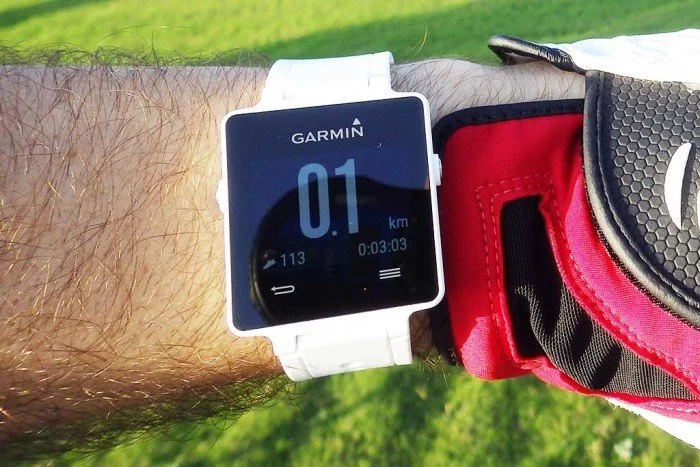
Por último, con el Garmin Vivoactive también puedes llevar registro de puntuación. Dentro de la aplicación de golf, presionando el botón de menú puedes seleccionar la opción «Comenz. puntuación». A continuación selecciona el hoyo y el número de golpes que has necesitado para completarlo. Pero no hagas trampas y te cuentes de menos.
Esta puntuación se irá guardando a medida que vayas completando la partida.
En el menú también puedes encontrar la tarjeta de puntuaciones, para comprobar cómo vas hasta el momento, y confirmar que te va a tocar pagar la ronda de cervezas cuando llegues a la casa club.
Pantalla táctil
El Garmin Vivoactive no es el primer Garmin que cuenta con pantalla táctil, aunque sí es el primero diseñado específicamente para ello. Verás, antes que el Vivoactive estuvieron los Garmin 610 y 620 (incluso antes, los 405 y 410 tenían un bisel táctil). Ambos incluían pantalla táctil más como un extra «molón» que como una necesidad en sí misma. Tenían los botones físicos necesarios para haber podido funcionar sin dicha pantalla y haberse manejado con ellos perfectamente.
Pero en el Vivoactive la pantalla táctil es un medio de control en sí mismo, pues sólo disponemos de dos botones físicos y su uso es bastante marginal. El izquierdo para encender y apagar la luz y el derecho para iniciar o parar actividades y entrar al menú. Eso es todo. El resto de funciones deberás realizarlas a través de la pantalla o de los dos botones táctiles que puedes encontrar debajo de ella.
¿Y qué tal se mueve el Garmin Vivoactive con la pantalla táctil? Francamente bien. Pero en vez de escribirlo, es mejor que lo veas en este vídeo.
Dos preguntas surgen al respecto de la pantalla táctil.
- ¿Responde bien bajo la lluvia?
- ¿Se puede usar con guantes?
Contestar esas preguntas es muy fácil, simplemente hay que comprobarlo. En primer lugar, lo probaré con agua, simulando una lluvia otoñal.
Veréis, en Hollywood lo tienen muy bien planteado, tienen un escenario con dispositivos específicos para simularte desde una ligera lluvia (más conocido como calabobos. Y sí, está en la RAE), hasta la tormenta tropical perfecta. Pero aquí en C1M dispongo de unos medios algo más rudimentarios: el grifo de la cocina.
La pantalla no tiene problemas a la hora de usarse con lluvia ligera, pero como la cantidad de agua sea excesiva no responderá correctamente. Es por este motivo por el que, cuando realizas una actividad de natación, la pantalla y botones táctiles se desactivan por completo. Simplemente no iban a funcionar correctamente. Y por este motivo también sólo puede tener una pantalla de datos al nadar, porque no habría forma de alternar manualmente entre varias pantallas.
El uso con guantes depende del grosor de los mismos. He probado con varios guantes y, sólo con los más finos, he podido usar la pantalla. Guantes de ciclismo o de golf han funcionado sin mayor problema, pero guantes más gordos hacían imposible el uso de la pantalla. Así que ten esto en cuenta, sobre todo para su uso en invierno, pues puede presentar una limitación.
Autonomía
La autonomía que Garmin declara para el Vivoactive es de hasta 3 semanas en uso como monitor de actividad y reloj inteligente, y 10 horas usando GPS (con GLONASS desactivado). Estamos acostumbrados a relojes inteligentes que duran 1 día, 2 con suerte. Así que esas 3 semanas que aparecen en las especificaciones suenan a gloria.
No he realizado la prueba de las tres semanas, porque supongo que lo que más te importa es la duración que ofrece la batería cuando estás usándolo para hacer deporte, ni tampoco disponía de una unidad que pudiera dedicar a ese uso específico.
Para comprobarlo, he completado una carga hasta el 100% y lo he echado a la calle toda la noche grabando una actividad para que gastara toda la batería. Eso si, a tener en cuenta que el reloj estaba con la opción de satélites GLONASS activada, que aumenta el consumo de batería (por lo tanto no llegará hasta las 10 horas de máximo).
A la mañana siguiente, lo he recogido del tejado y efectivamente estaba apagado. Cuando lo he puesto en carga, la actividad se encontraba en pausa, no se detiene ni se pierde. Así que simplemente hay que pararla y sincronizar el reloj, para poder mostrarte el resultado.
Casi 7:30 de autonomía, que comparado con las 10 horas indicadas en las especificaciones parece un resultado algo pobre. Pero como digo, puede ser que el hecho de haber activado el uso de GLONASS sea el que reduzca tanto la autonomía, que suele tener un impacto de alrededor de un 15% en la duración total.
Y como no me gusta dejarte a medias, al día siguiente he repetido la prueba, esta vez desactivando esa opción y usando sólo GPS.
Repito la misma operación del día anterior. Carga al 100% y a la calle a dormir al raso.
Esto es otra cosa. No llega a las 10 horas de máximo que promete Garmin, pero se queda bastante cerca: 9 horas y media de autonomía total (Bluetooth activado). Es un resultado impresionante, teniendo en cuenta que sólo tiene 8mm de grosor. Y similar a lo que se ofrece en otros relojes de la misma categoría y bastante más tamaño.
Reloj inteligente
El Garmin Vivoactive sigue el rumbo iniciado con el Garmin 920xt, el primero en incluir prestaciones de reloj inteligente como la estamos viendo hoy en día. Antes estuvo el Garmin Fenix 2, pero tan sólo mostraba las notificaciones del teléfono en pantalla (y con un consumo de batería exagerado).
Pero de toda la gama, el Vivoactive es lo más cercano a un reloj inteligente tradicional, sobre todo por la inclusión de la pantalla táctil, que hace de su manejo algo más tradicional a lo que estamos acostumbrados.
Así, el desplazamiento por los widgets de la pantalla lo haces deslizando el dedo. El orden de estos widgets lo puedes modificar desde Garmin Express en el ordenador, aunque desde el móvil es más sencillo (también se pueden ordenar las aplicaciones).
Estas pantallas son las que te ofrecen la funcionalidad de smartwatch, actualizando los datos que muestran a través de Internet al tener conectado el reloj a tu teléfono.
El que probablemente más usarás es el widget de notificaciones. Aquí podrás ver tus notificaciones.
Y podrás entrar en cada una de ellas para saber si tienes que atender el correo o mensaje con cierta urgencia.
Pero sólo se pueden visualizar, no es posible interactuar con ellas. Por tanto, ni podrás borrarlas, ni marcarlas como leídas ni por supuesto contestar mensajes.
Todos los detalles se obtienen de internet, o bien, los que facilita el propio teléfono, como por ejemplo mostrar tu calendario del día. Muy importante, porque así no te olvidarás de las cosas más importantes de cada día.
También puedes controlar el reproductor de música con el widget disponible para tal efecto. Este widget también está presente en el Fenix 3, pero es en el Vivoactive donde tiene más sentido por su pantalla táctil. En la aplicación de Android es posible configurar el reproductor que se quiere controlar con el reloj (por ejemplo, Spotify), pero en iOS no permite seleccionarlo, controlará la aplicación de música por defecto.
El widget de tiempo es bastante completo. Por defecto te facilita toda la información para tu ubicación actual, con temperatura actual, máxima y mínima y probabilidad de lluvia.
Si presionas en la pantalla, podrás entrar a ver la previsión para las próximas horas
Y si te desplazas a izquierda o derecha la previsión por días
Pero donde entra la parte más completa es en la posibilidad de instalar widgets, tanto de Garmin como de terceros, a través de Connect IQ (que entraré en detalle a continuación). Esto permite ampliar la funcionalidad como reloj inteligente hasta límites que aún tenemos que descubrir.
Un ejemplo. Este widget está desarrollado por Garmin, y te permite mostrar la hora en la que sale y se pone el sol (y la luna) no sólo de hoy, sino que si pulsas en la pantalla puedes seleccionar una fecha diferente para, por ejemplo, saber cuándo se pondrá el sol el día que hayas planeado una excursión.
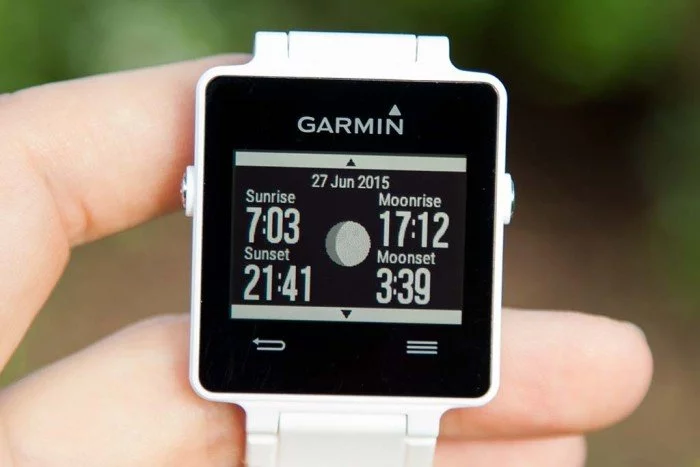
Connect IQ
Connect IQ se estrenó originalmente en el Garmin 920xt. Es la respuesta de Garmin a la reciente fiebre de relojes electrónicos. Te permitirá instalar aplicaciones en el reloj, tanto de Garmin como de desarrolladores externos. Son 4 los tipos de apps soportados:
- Aplicaciones: Aplicaciones completas, más avanzado que la simple creación de alguna pantalla adicional. Aquí podremos ver cómo empresas como BSX Insight pueden crear una aplicación de entrenamiento y hacer uso de su medidor de lactato no invasivo. O aplicaciones de navegación específicas para montaña.
- Widgets: Facilitar información obtenida de otras fuentes. Un widget del estado bursátil que recibiese información desde el teléfono sería un buen ejemplo, o la situación actual del tiempo.
- Campos personalizados: Campos de datos que puedes añadir a las pantallas que tengas configuradas. Yo ahora mismo tengo uno instalado que estima el tiempo de finalización para una carrera de media maratón. O un contador de cervezas consumidas, para que sepas cuánto debes correr para hacer sitio a las 3 cervezas que te vas a tomar post-entrenamiento con tus compañeros.
- Esferas de reloj: Nuevas pantallas para mostrar la hora, analógicas o digitales.
Estas aplicaciones se instalan desde el ordenador a través de Garmin Express, o bien desde la propia aplicación del teléfono, como si fuese la tienda de aplicaciones para tu móvil. Por el momento la plataforma es francamente nueva, por lo que el catálogo es bastante limitado. Pero es de esperar que la disponibilidad vaya aumentando, y no sólo de empresas importantes, sino también de desarrolladores amateurs. Por ejemplo, pmTriathlon, una aplicación que acerca el uso del Vivoactive en una competición de triatlón.
Dada la novedad, los grandes desarrolladores están aún trabajando en las aplicaciones principales, que son con las que empezaremos a ver el verdadero potencial de la plataforma. Si quieres ver alguna de esas aplicaciones, o conocer más detalles acerca de Connect IQ, te recomiendo que leas la entrada dedicada de forma específica a la plataforma.
El soporte para widgets y aplicaciones a través de Connect IQ es aún difícil de valorar para saber hasta dónde será capaz de llegar. Aquí es necesario que Garmin aporte un esfuerzo importante para atraer desarrolladores que estén interesados en ofrecer programas. Para ello, Garmin debe saber cómo premiar a estos desarrolladores, porque evidentemente ellos desarrollan si obtienen un beneficio.
Con las aplicaciones todo es más claro. Un desarrollador crea un producto, por el que cobra X, y desarrolla una aplicación de Connect IQ para poder usar ese producto con los relojes de Garmin. Hasta aquí todo correcto, y se obtiene beneficio de la venta del producto, siendo la aplicación un medio de uso, o un incentivo de compra. El ejemplo más claro podría ser el monitor de oxígeno Moxy.
¿Pero qué ocurre con los widgets o las esferas de reloj? Aquí las opciones de monetización son bastante más difusas, pues no hay posibilidad de vender una pantalla de reloj a través de la tienda de aplicaciones de Garmin. No hay incentivo para el desarrollador, más allá del mero hobby o entretenimiento.
Tanto Apple como Google están empujando muy fuerte con sus relojes. Hoy en día Garmin está varios escalones por encima en dos puntos muy importantes: autonomía y uso deportivo. Pero si quieren seguir en la pelea deben tener diferentes aplicaciones, y para ello es necesario ofrecer beneficios económicos a las empresas que se van a encargar de desarrollar productos para Connect IQ, ya sea dando la opción de venderlas para obtener ingresos, o mediante concursos o aplicaciones patrocinadas. Han desarrollado una plataforma de futuro, pero el trabajo no termina ahí, hay que seguir invirtiendo recursos para que continúe su crecimiento.
Mi opinión
Tras unas cuantas semanas de uso intensivo, tanto a diario como entrenando y practicando una gran variedad de deportes, puedo decir que el Vivoactive me ha dejado sorprendido a la par que satisfecho. Además, esa satisfacción ha ido creciendo cuanto más lo usaba, por la sensación producida por el: «Pues también hace esto. Y esto otro.»
Y es que en todo momento lo he valorado no como un reloj GPS para correr, sino como un reloj de fitness, un monitor de actividad o un reloj inteligente. Pero con el uso durante diversos entrenamientos es cuando aflora la mejor versión del Vivoactive, esa en la que destaca como un buen reloj deportivo.
Es cierto, no es el más completo ni el que más prestaciones ofrece en ninguno de los deportes, pero si es el que más ofrece en conjunto dentro de su gama de precios (sobre todo por la inclusión de la aplicación de golf). Y todo ello en un dispositivo realmente cómodo que apenas se hace notar. Correr con el Vivoactive en la muñeca hace darte cuenta de lo que pesa un Fenix 3. No es que sea incómodo, su peso tampoco es excesivo, pero sí se hace notar. El delgado Vivoactive, en cambio, pasa totalmente desapercibido.
A la hora de que puedas determinar si es el reloj que estás buscando, debes plantearte el tipo de deportista que eres. Si eres triatleta y tu intención es participar en un IronMan, el Garmin Vivoactive claramente no es lo que busques. Pero para todos los demás deportistas que practiquen cualquier deporte a nivel popular, cumplirá sobradamente todas las expectativas.
El único motivo que puede hacerte decidir por otro modelo diferente puede ser la ausencia de creación de entrenamientos avanzados, para realizar entrenamientos estructurados o de series e intervalos. Pero gracias a Connect IQ incluso éste detalle se podrá solventar en un futuro gracias a una nueva aplicación. Y es que las expectativas que llegan gracias a esta plataforma son grandes, pero ahora Garmin tiene que, al menos, ayudar a hacerlo realidad.
¿Te ha gustado la prueba?
Espero que esta prueba te haya aclarado todas tus dudas con el Garmin Vivoactive. Si quieres saber la verdad, se necesitan muchas hora para realizar cada análisis. Tomar datos, fotos, vídeos, escribir la propia prueba… Es un proceso muy largo y exigente.
Si te ha gustado y quieres echar una mano, puedes dejar tus impresiones en los comentarios que encontrarás abajo. Me servirá para saber tu opinión, o para que me preguntes dudas si algo no te ha quedado claro. Comparte la entrada en redes sociales, seguro que a tus amigos también les gustará.
Si te animas con la compra del dispositivo, hazlo en los enlaces que encontrarás a continuación. De esta manera tu ahorras al conseguir buenas ofertas, y a mi me retornan una pequeña comisión que es la que soporta esta web y sus pruebas.
Comprar Garmin Vivoactive
El Garmin Vivoactive lo vas a encontrar en dos colores diferentes, blanco y negro (a los que luego puedes cambiar el color de la correa comprándola por separado). Y en cada color, dos opciones, con sensor de pulso o sin el. Aquí te dejo los precios de venta. Ya sabes, si lo compras a través de estos enlaces, ayudas al desarrollo de esta página y a que continúe habiendo pruebas como ésta.
Además, estos son los precios que puedes encontrar en Amazon en toda su red europea
https://www.amazon.es/dp/B00RE1UKLC&tag=c1mes-21
https://www.amazon.es/dp/B00RE1UL52&tag=c1mes-21
https://www.amazon.es/dp/B00RE1ULP2&tag=c1mes-21
https://www.amazon.es/dp/B00RE1UK7G&tag=c1mes-21


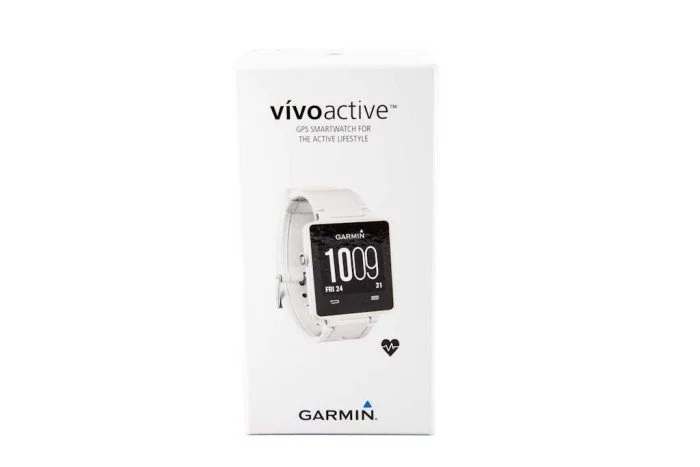
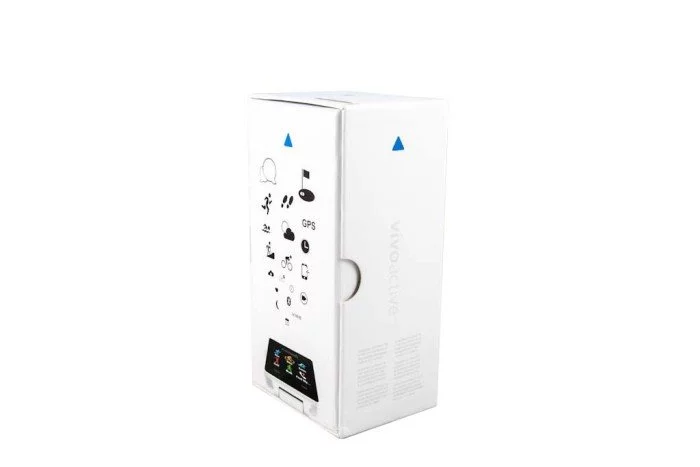
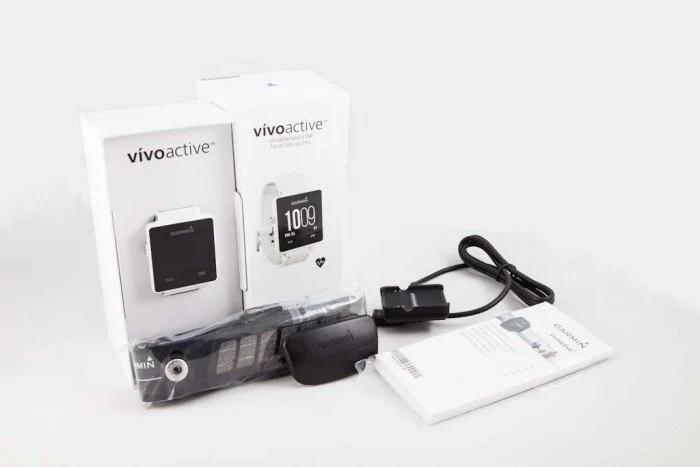
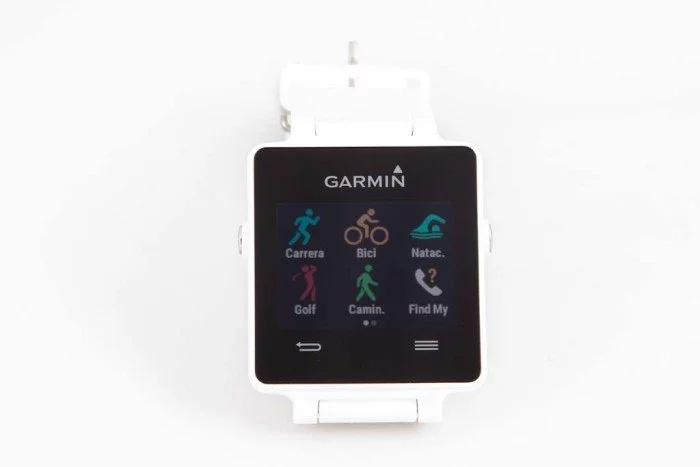
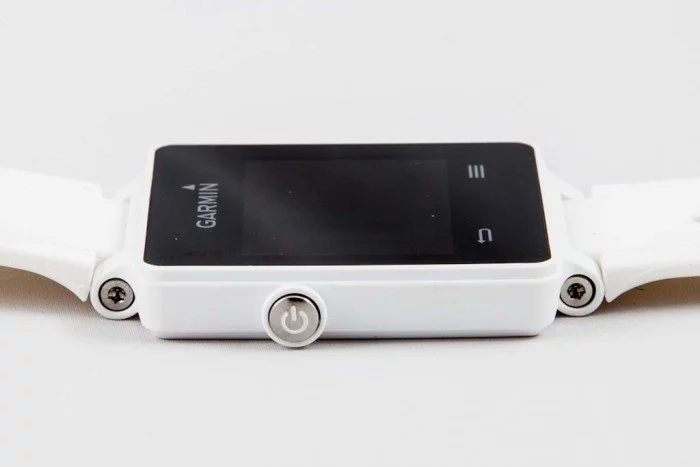
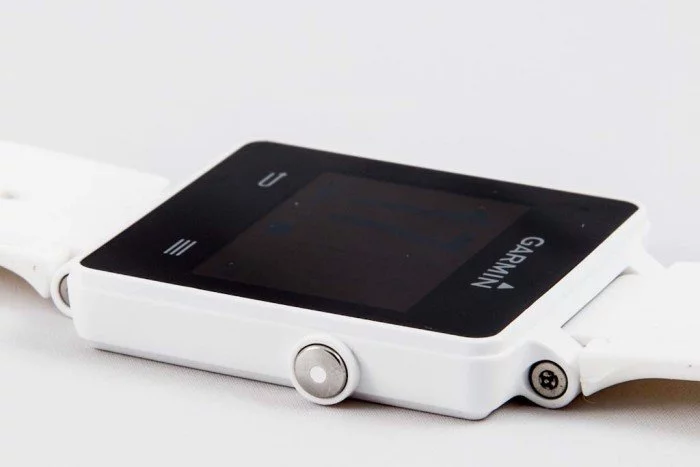

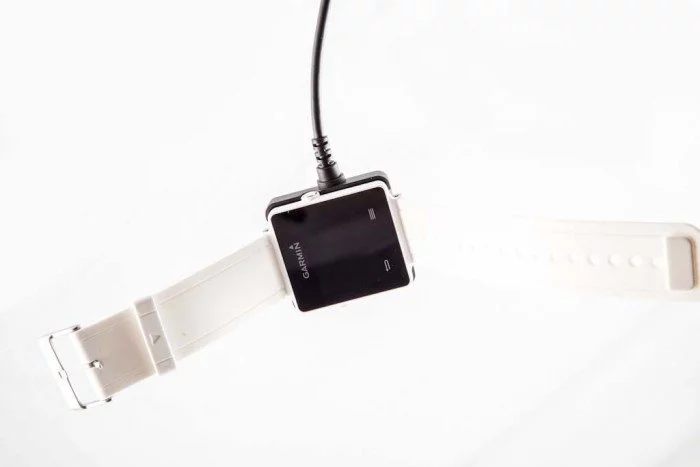
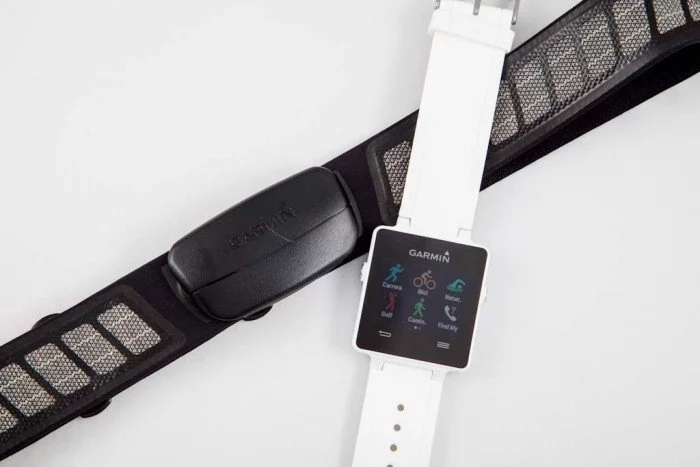
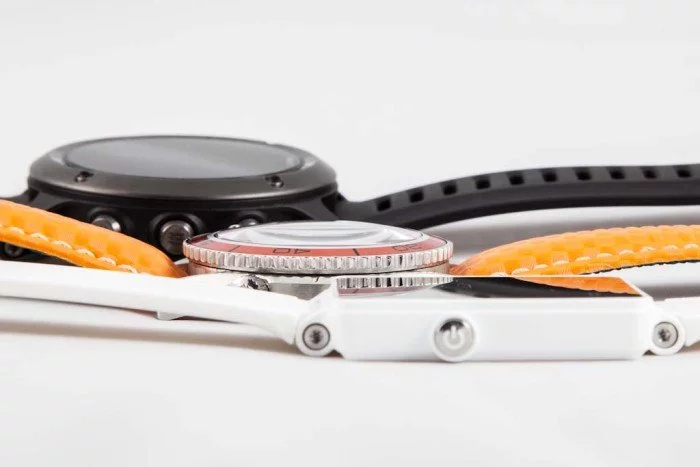
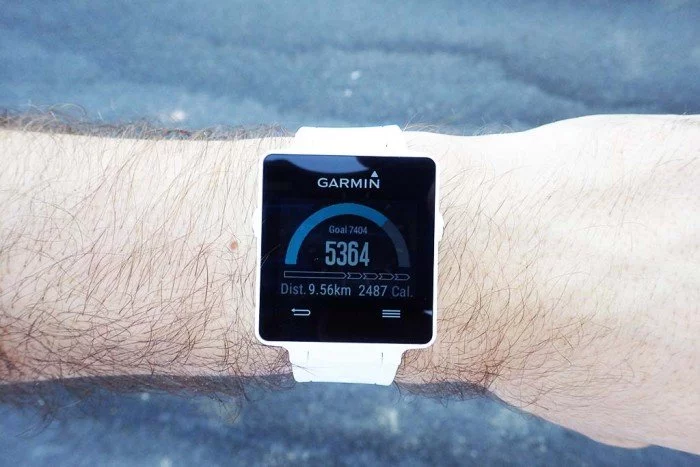
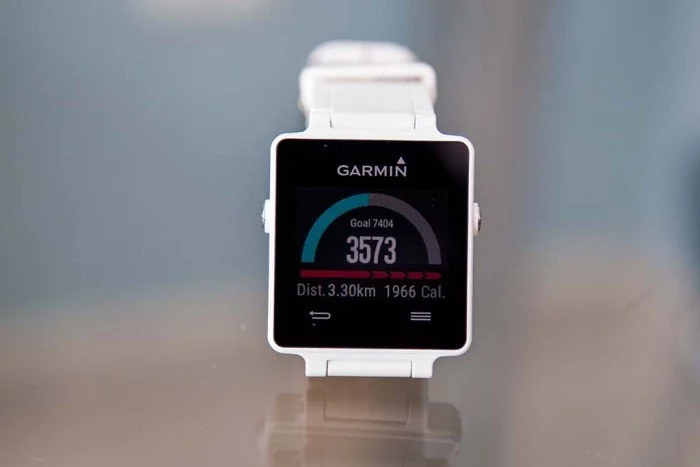
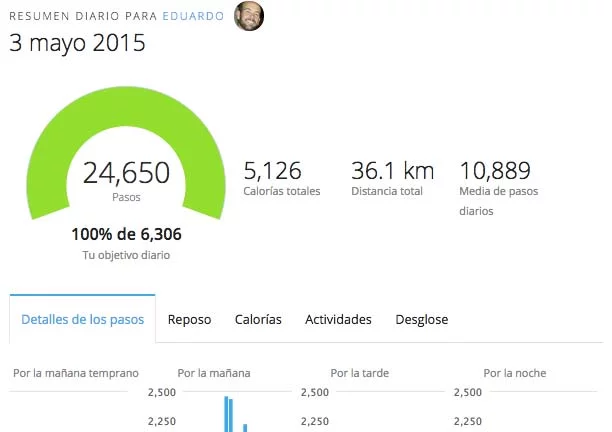
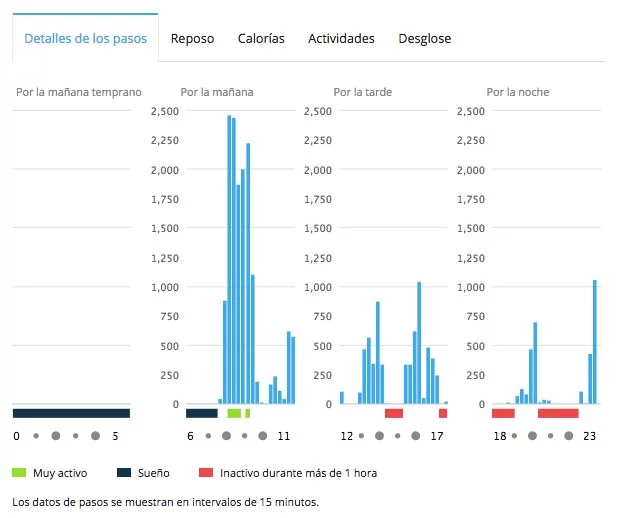
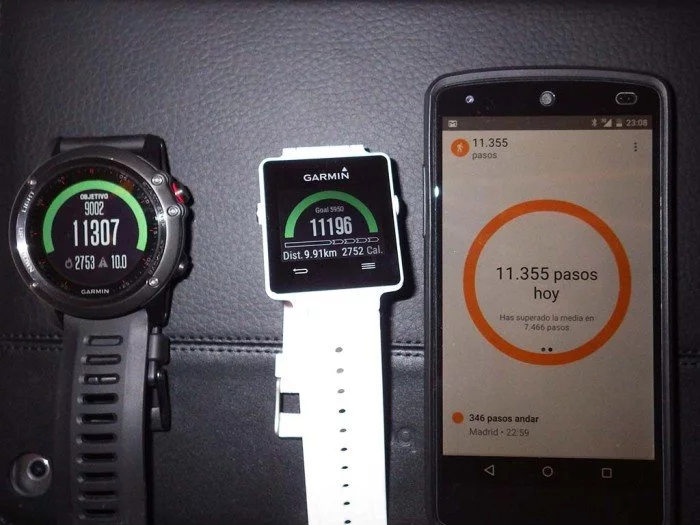
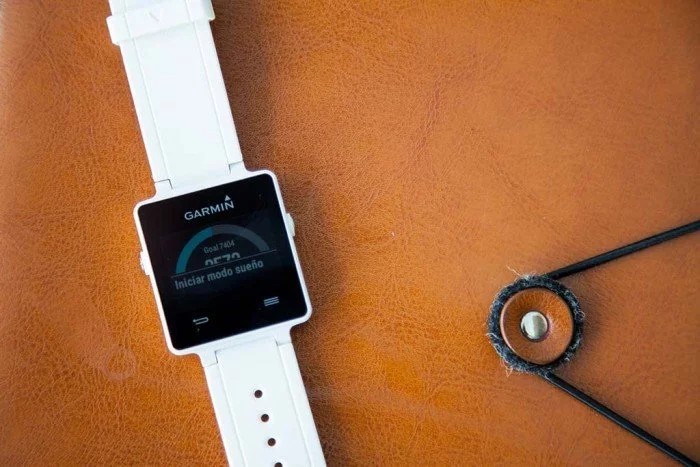
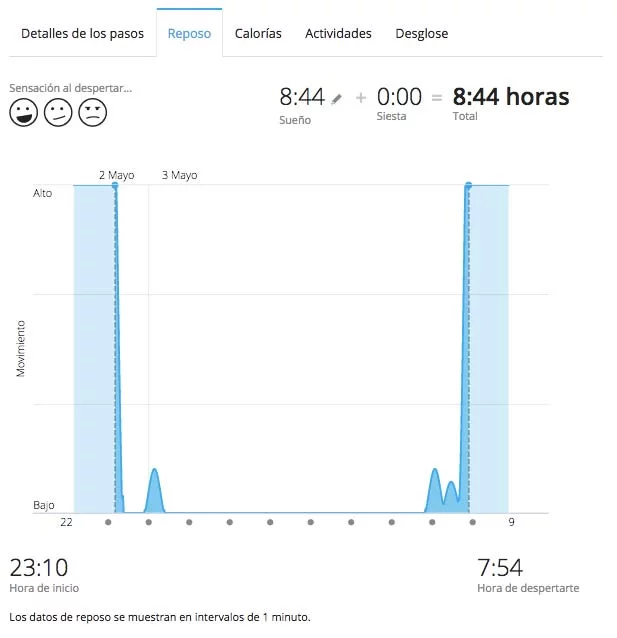
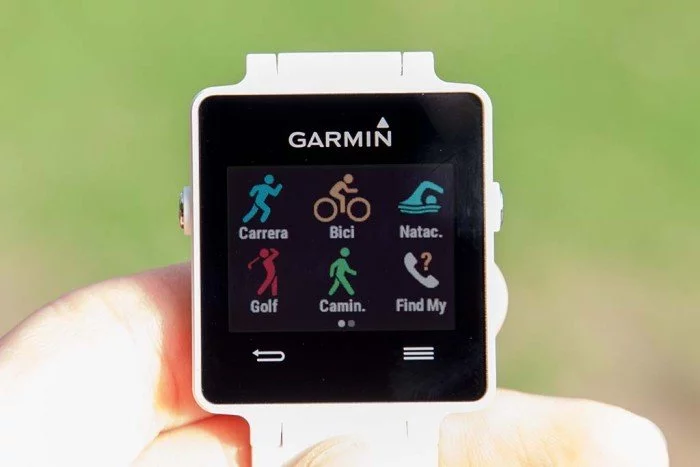
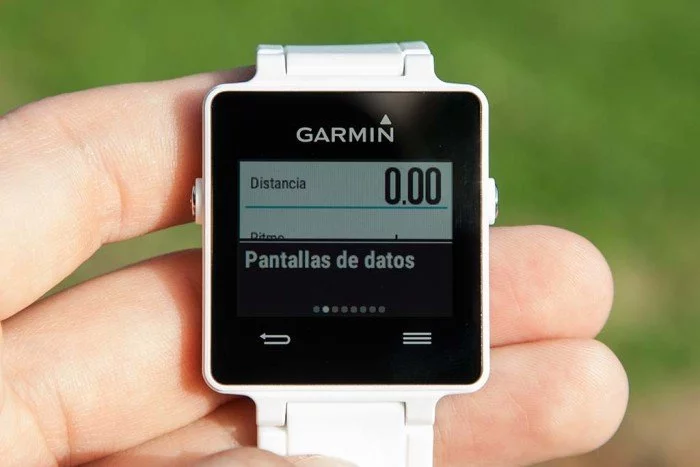
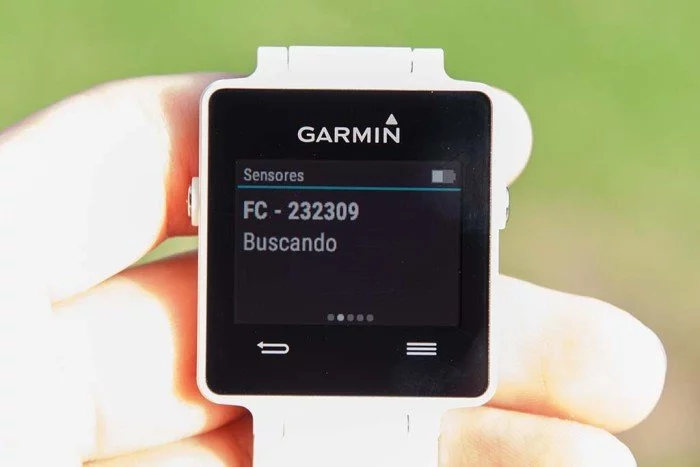
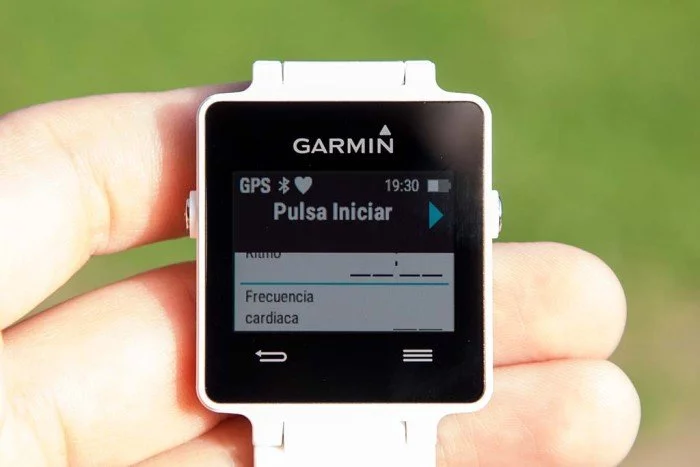
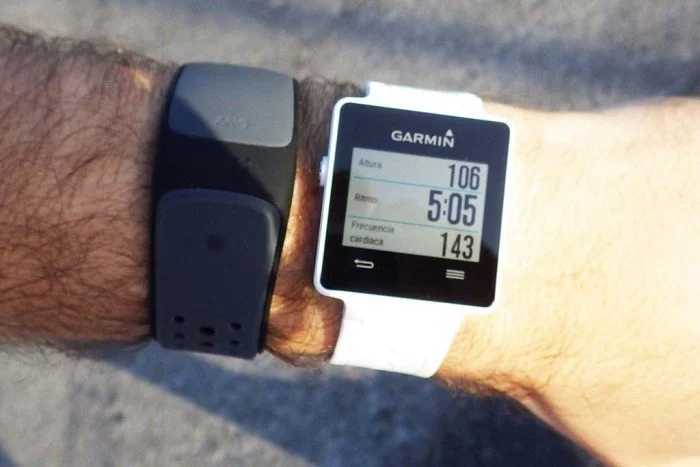
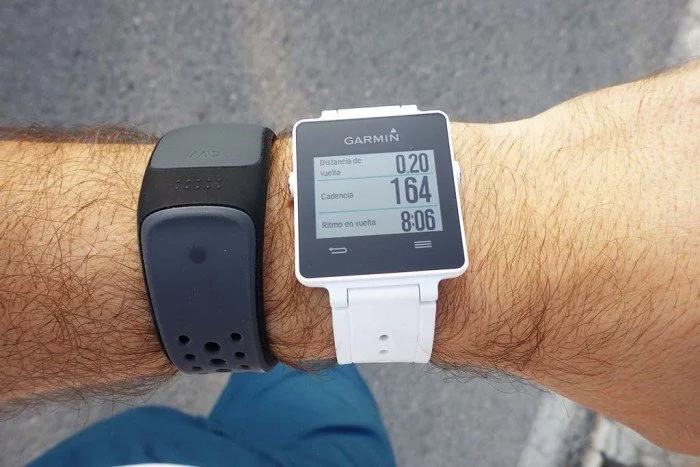
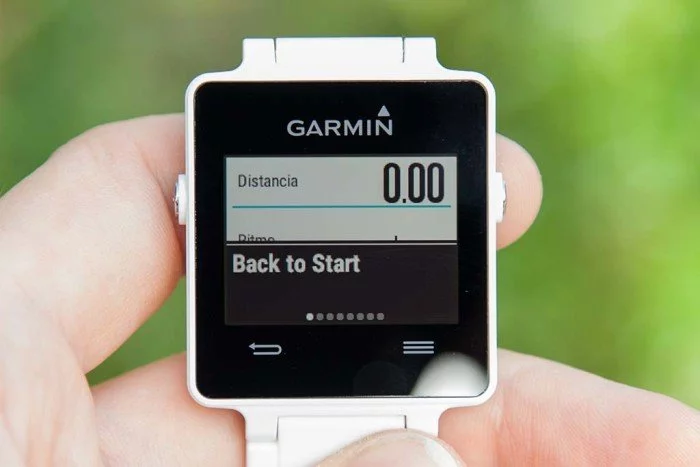
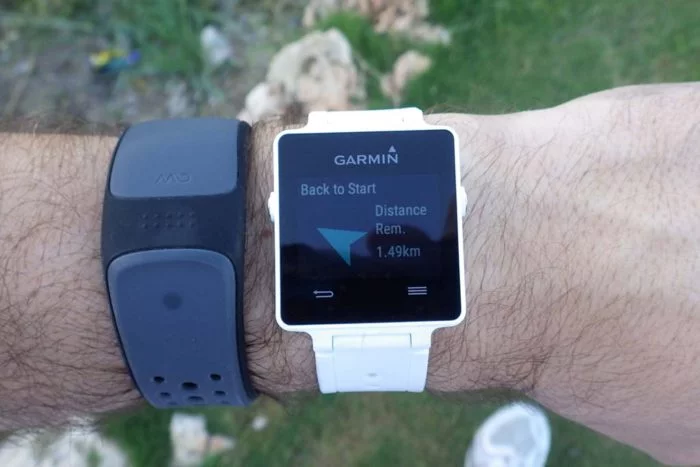
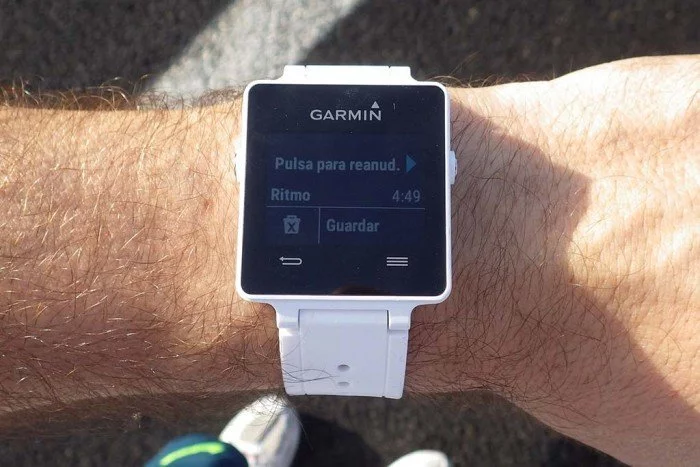
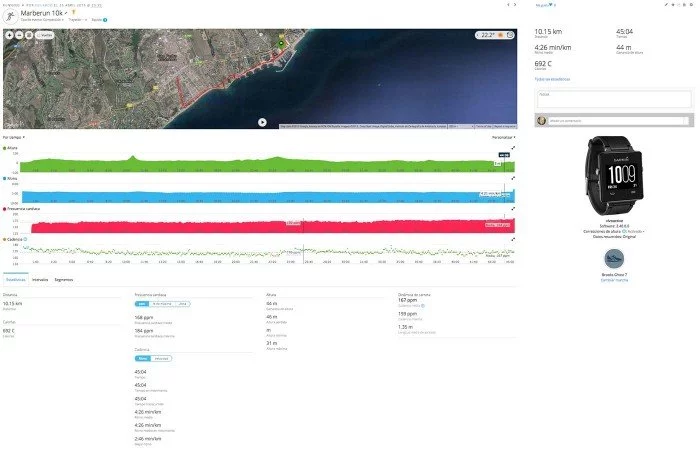
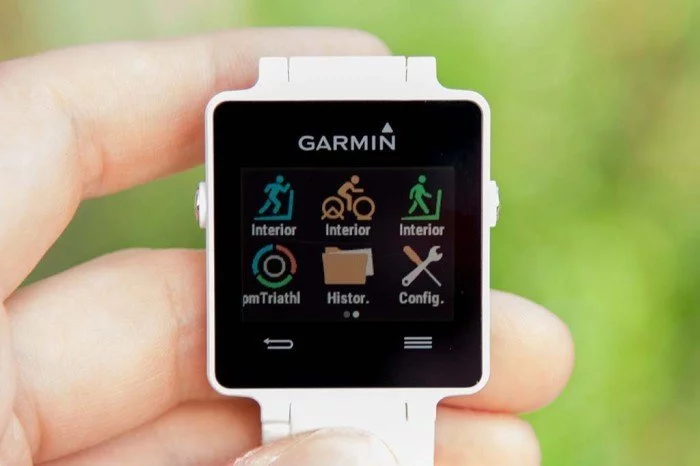
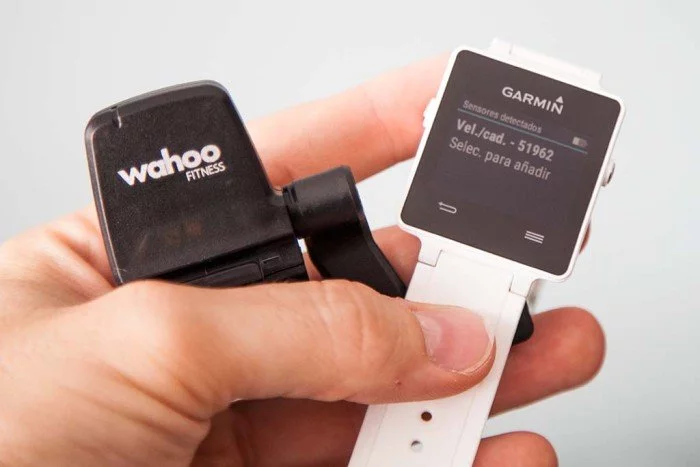
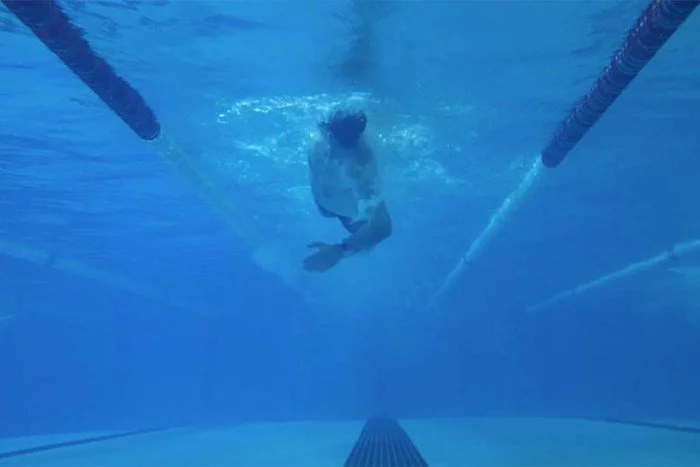
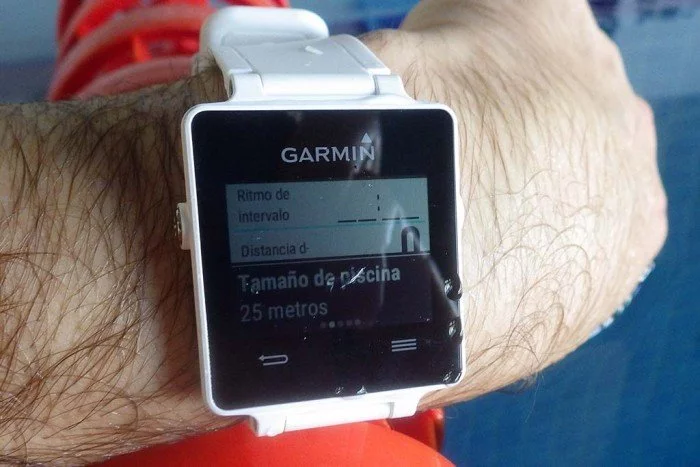
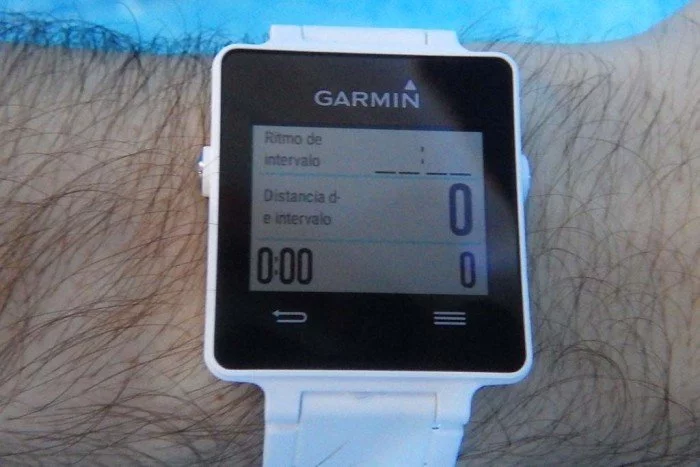
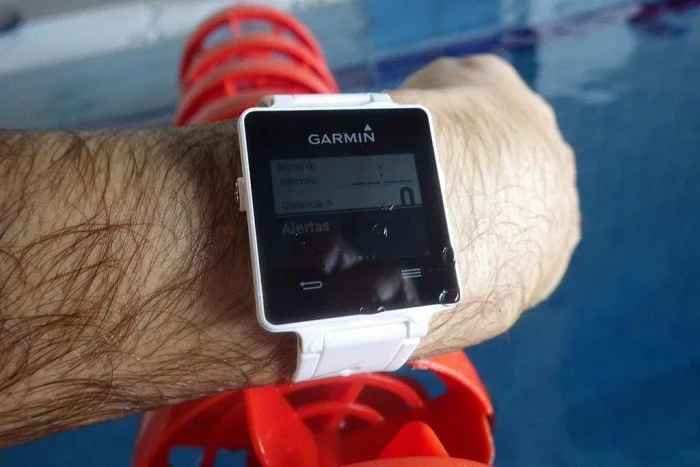
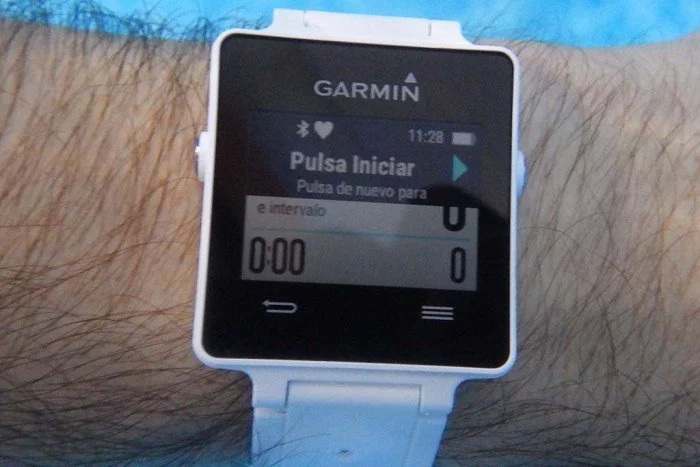
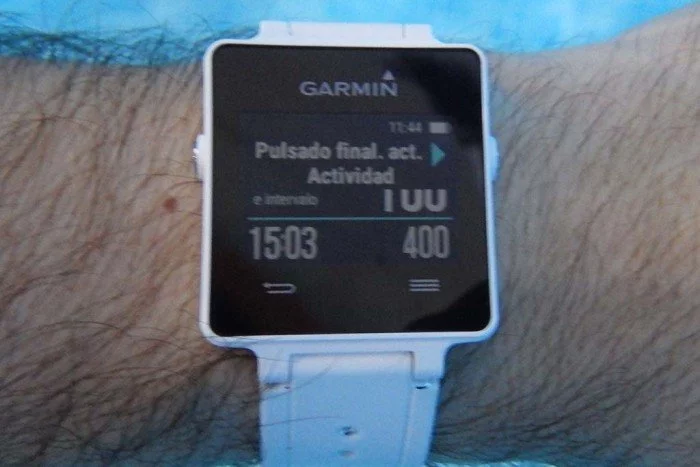
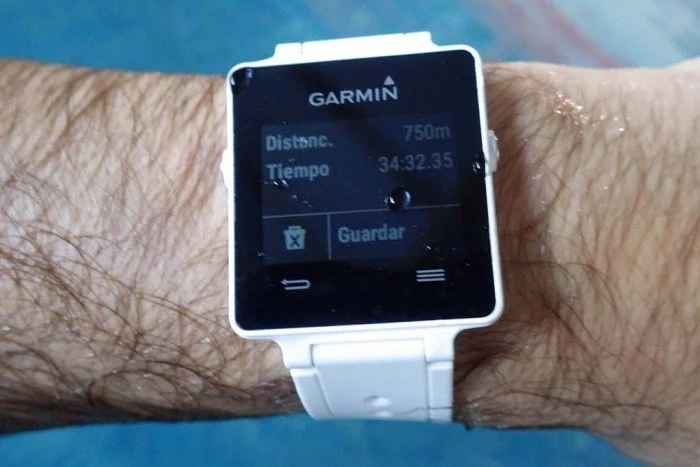
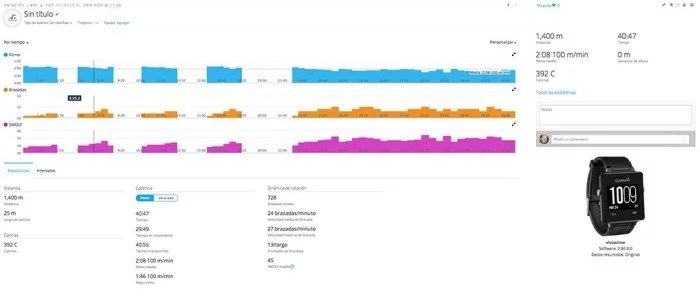
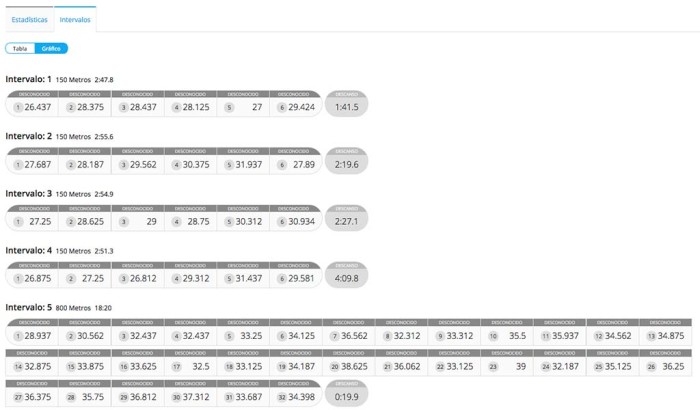
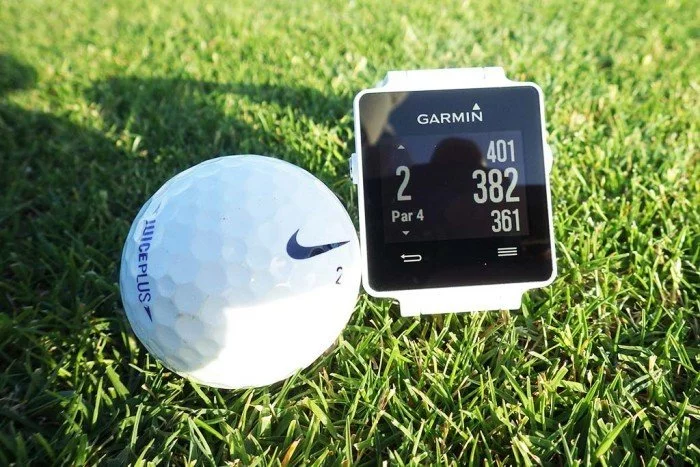
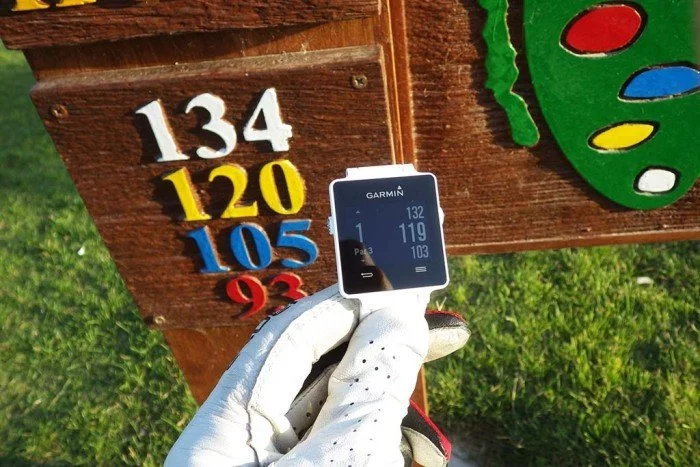
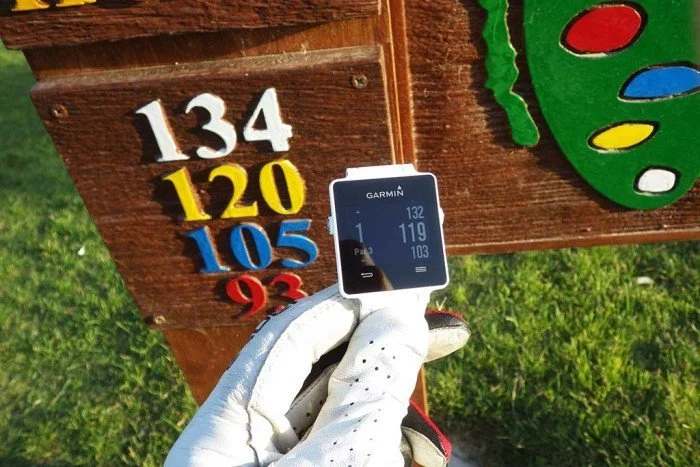
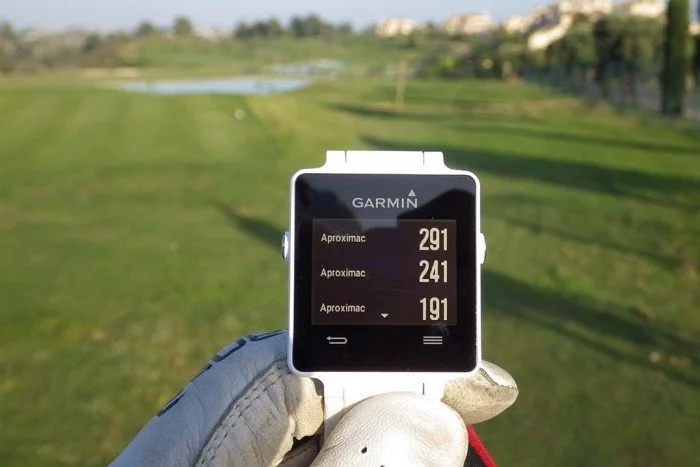
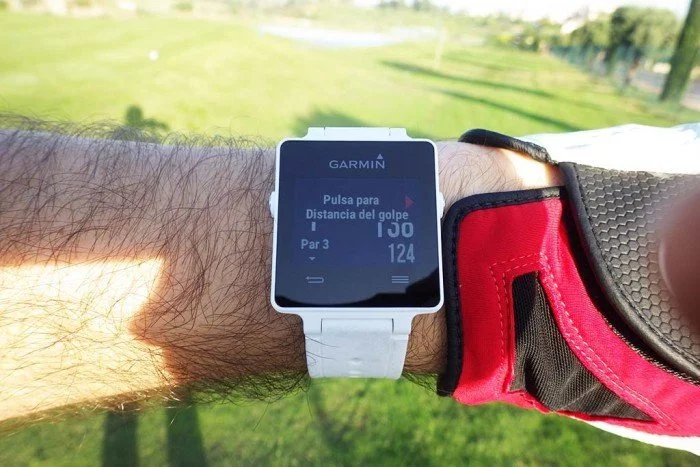
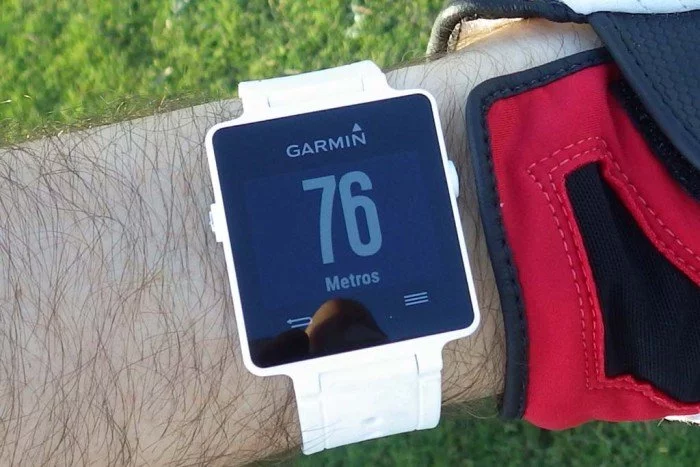
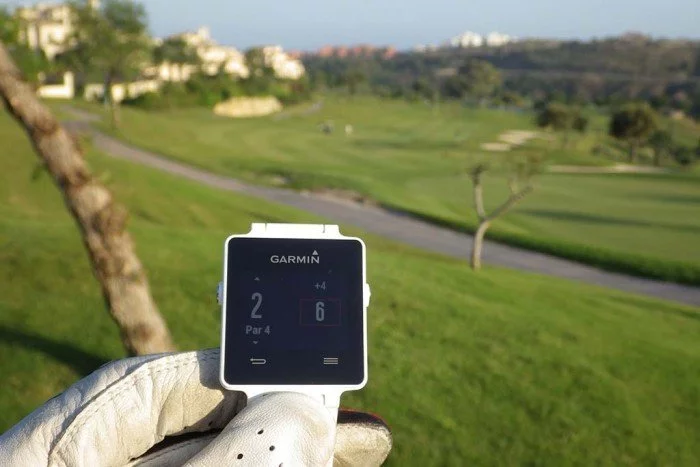
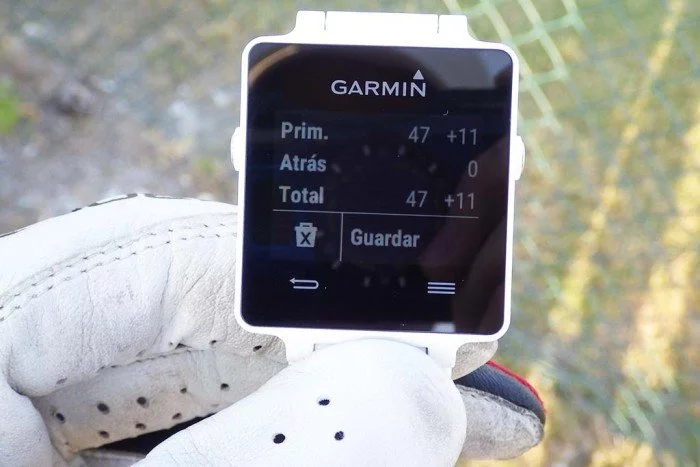
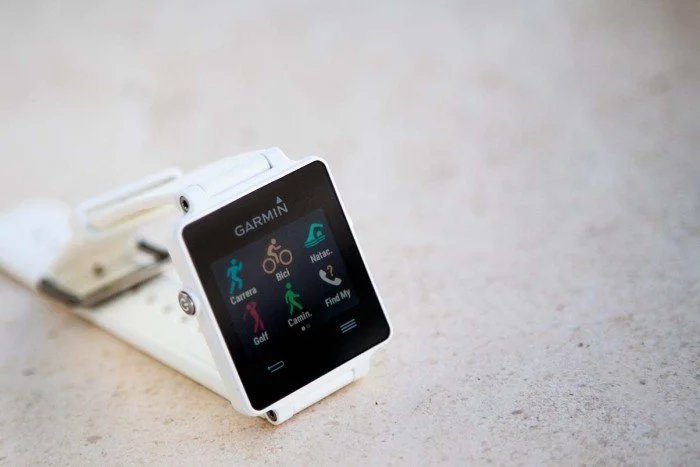
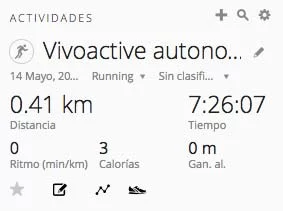
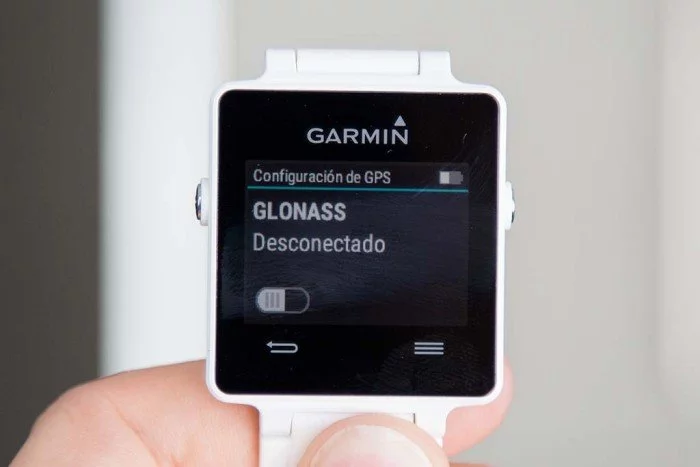

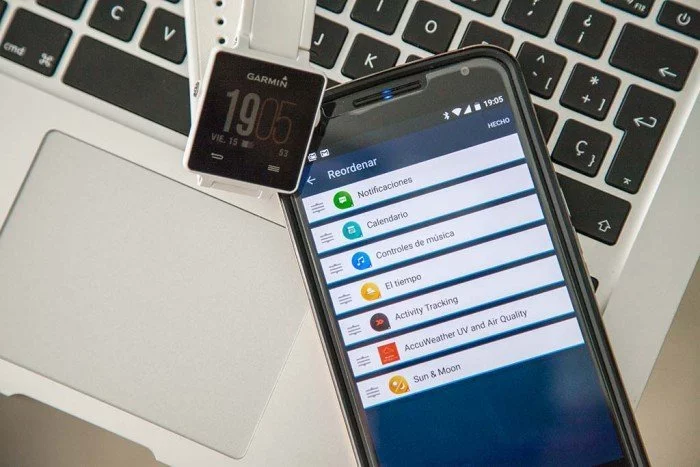
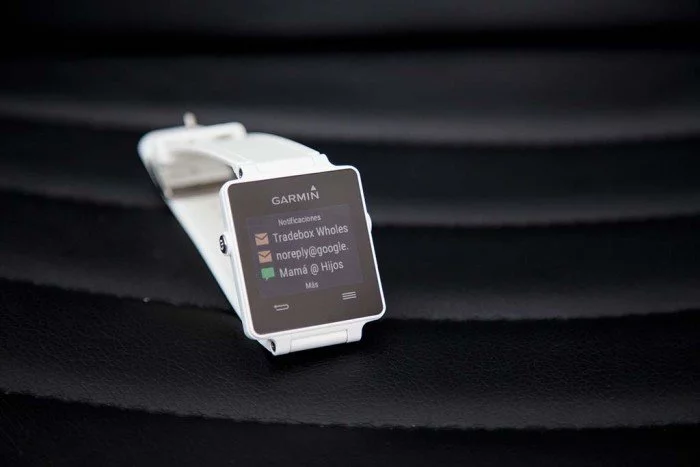
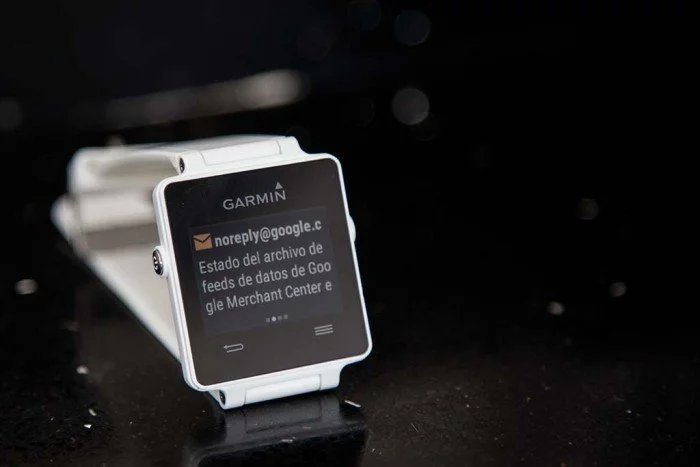


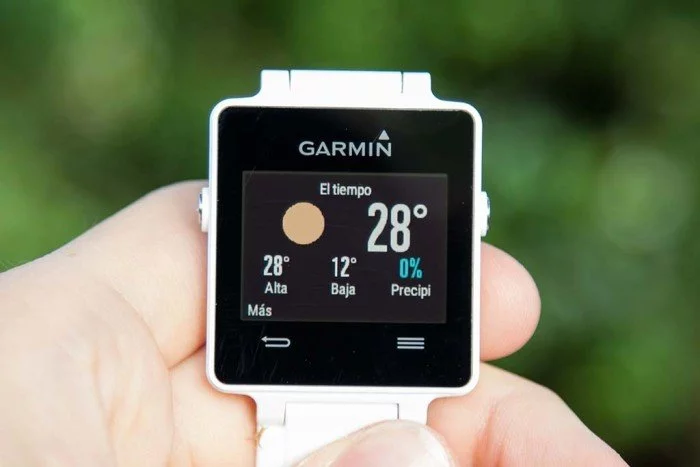
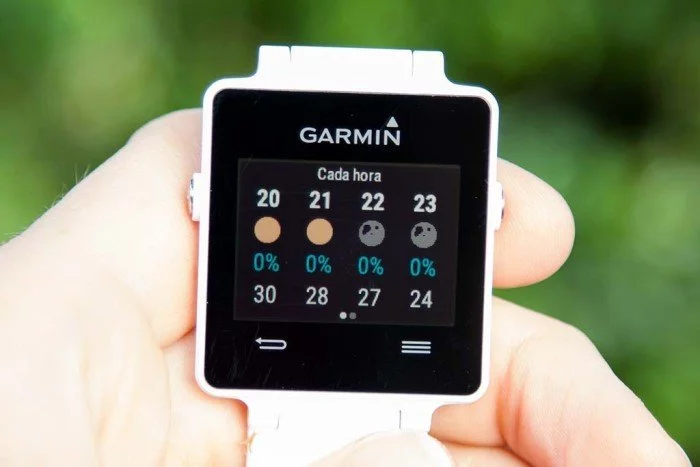
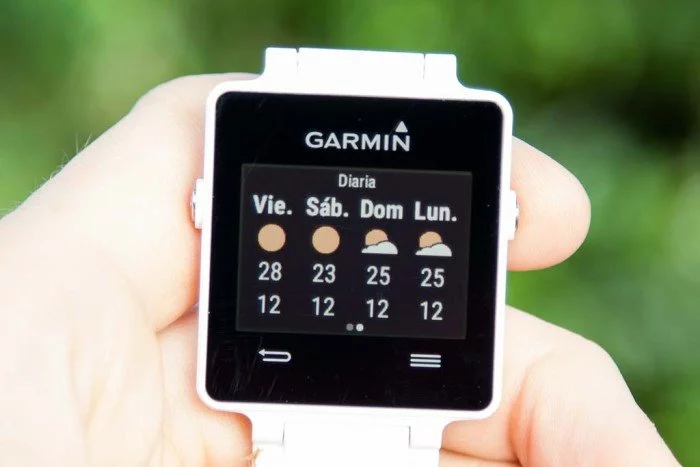
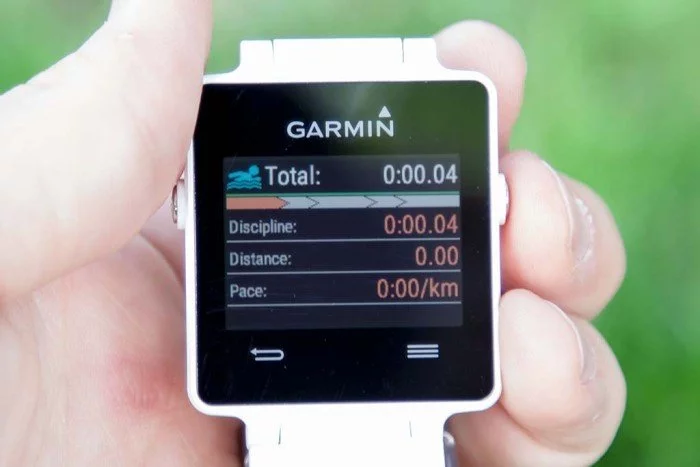
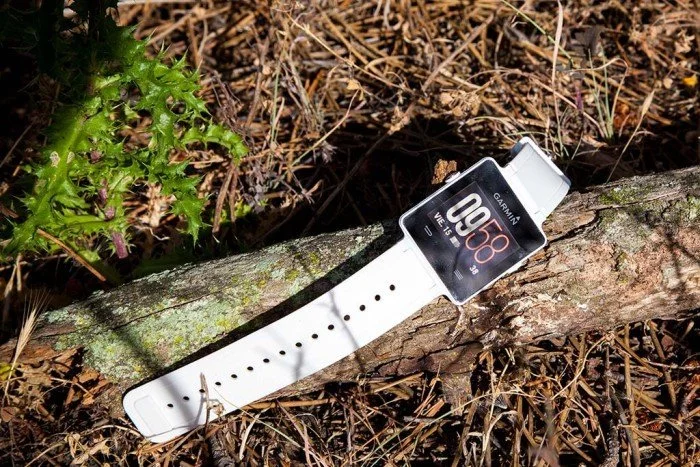
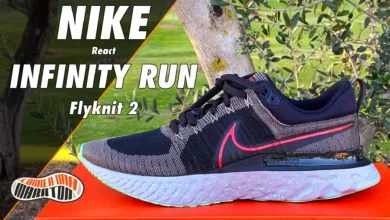
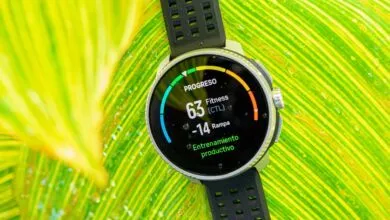
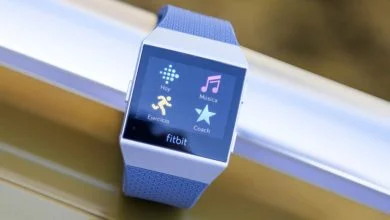
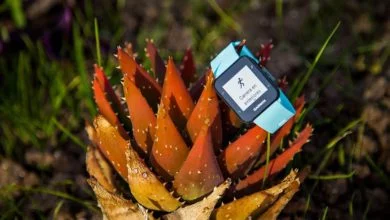
Te estaba esperando este artículo para preguntarte: ¿Tiene aplicación para ir al gimnasio? ¿O tendremos que marcar Caminar en cinta y luego cambiarlo en la web?
Gracias y sigue así
Pues no, no hay aplicación específica de gimnasio, y mira que sería sencillo… Cambiar el icono y eliminar uso del acelerómetro.
Pero bueno, seguro que dentro de poco hay aplicación a través de Connect IQ
Otro excelente análisis… El poderle conectar varios sensores lo hace muy atractivo, sin embargo la parte del diseño no me termina de convencer, lo veo muy cuadrado y un tanto frágil, creo que sería mejor si el extensible fuera mas ancho y pareciera fusionarse con el cuerpo del reloj, no terminó de encantarme por ese pequeño detalle!
A mi al principio en fotos no me gustó. De hecho me pareció feo. Pero en la muñeca gana bastante, y es MUY cómodo.
Lo bueno siempre se hace esperar…genial !!! en cuanto al diseño, he de decir que en la mano su aspecto es notablemente superior a cualquier imagen, a mi me sorprendió gratamente.
Hola muy buenas, esperaba el análisis, estoy entre este el Ambit3 Sport, se que son productos diferentes pero para mi que soy corredor de montaña siempre que puedo, no hago bici, ni nado (solo lo justo por obligación) ni juego al golf, jejeje, creo que es perfecto, solo me gustaría que tuviera lo de seguir un track en .gpx como hace el ambit3, pero eso quizá se podría hacer en un futuro con un app verdad??, estoy ahorrando para este ya mismo, jajajaja. Muchas gracias por el analisis, como siempre el mejor!.
Ahh, sería lo suyo que se pudieran marcar las laps con el boton de la luz o incluso con el derecho como en natación, lo digo por que a veces vas con la mano empapada en sudor y no se como de preciso será no?
Cuando se lanzó Connect IQ, Garmin indicó los «partners» con los que iban a trabajar. Uno de ellos es Komoot, y está preparando una app de navegación. Según la información que tengo necesitará estar conectado al teléfono, y no habrá una ruta como tal a seguir, sino que serán indicaciones de cruces y distancias (algo parecido al tipo de navegación que tenía el Garmin 410).
Si eres de ir mucho a la montaña por rutas no conocidas, el Suunto me parece mejor apuesta. Al menos, más segura.
sería genial que implementasen aplicaciones como endomondo, runtastic… ¿sabes algo?
Seguro que ya lo han pensado, y tendrán algo desarrollado, aunque sea por encima. Pero de momento están totalmente centrados en las aplicaciones de Apple Watch (realmente, tiene bastante más sentido para este tipo de empresas).
Creo que lo veremos, lo que no se puede saber es cuándo. Ahora mismo Connect IQ tiene un problema con la monetización. Garmin debe darle una nueva vuelta al modelo, porque aunque están previstas formas de rentabilizar aplicaciones, sólo lo veo interesante para fabricantes y grandes desarrolladores. Pero los pequeños estudios no van a ofrecer ninguna aplicación que pueda justificar el pagar una suscripción o compras dentro de aplicaciones.
Garmin debe permitir que se vendan aplicaciones de forma directa en la tienda de apps. Por suerte en el foro de desarrollo de Connect IQ hay bastante gente, y se preocupan bastante por las necesidades de los desarrolladores, así que espero que vayan puliendo la plataforma y para 2016 alcance cierta madurez.
Hola, muy buen analisis.
Me surgen unas dudas:
* Respecto a la natacaion:
– Las calorias gastadas como las mide? Hace una estimación en base a los metros realizados?.
– Crees que podría ser mejorable esta aplicacion en un futuro, mediante la plataforma Connect IQ, por ejemplo que registre natacion en aguas abiertas…?.
– Funciona la banda bajo el agua como en el Ambit 3?
El tema es que mi mujer vuelve a nadar y tambien quiere algo que le cuente los pasos cuando vaya a andar y vea las calorias que pierde al hacer ejercicio…
Muchas gracias
Hola Jorge, gracias.
Las calorías consumidas se estiman a través de su propio algoritmo. Normalmente ese algoritmo tiene en cuenta el peso, ritmo y por supuesto tiempo o número de largos. También puede haber variación según el tipo de estilo usado (espalda, libre, mariposa, etc), pero el Vivoactive no detecta el estilo.
Como todo, es una estimación, no hay que tomarlo al pie de la letra (ni hay una forma sencilla de comprobarlo).
No creo que Garmin lance una aplicación de aguas abiertas para el Vivoactive. Eso no quiere decir que cualquier desarrollador lo haga, pero lo dudo mucho. La natación en aguas abiertas tiene una complejidad muy elevada a la hora de poder establecer un algoritmo que pueda interpretar los datos (cada vez que se mete el reloj dentro del agua pierde señal de satélite). Ahí tenemos por ejemplo el Polar V800, que tras un año y medio en el mercado todavía no ha recibido ese perfil deportivo. No creo que un desarrollador externo sea capaz de hacer una aplicación que lo cubra.
No funciona el sensor de pulso bajo el agua, pues al ser señal digital no puede llegar la señal a más de 20-30 cm. Sí podría ser posible con un sensor óptico como Mio Link, y a pesar de que el reloj busca el sensor de pulso y se conecta perfectamente, no se escriben los datos en el archivo FIT de la actividad ni, por supuesto, se puede seleccionar campo alguno de FC. Pero Garmin no lo habilitará ya que, al no soportarlo de forma directa, en caso de hacerlo sería más una fuente de problemas que una ayuda a ciertas personas.
Con esas premisas y, a la espera de la ansiada actualización de aguas abiertas, el Polar V800 es el único que cumple con todos los puntos (y ahora está en color azul a muy buen precio en Amazon).
Buenas otra vez, y entre esta y el Fitbit Surge que más o menos son el mismo tipo de producto con cual te quedas?, se que con la Fitbit tampoco tengo lo de seguir tracks por montaña pero la Fitbit el monitor de frecuencia es optico y eso suma puntos
Precisamente ayer comencé con la prueba de Fitbit Surge. En dos o tres semanas tendrás todos los detalles.
Pues como no es una compra que vaya a hacer ya, esperaré el análisis y ya decido.
Un saludo y sigue así!
Hola.
Excelente análisis, creo que me gustan mas que los de Rainmaker.
Solo una anotación, por si algún ciclista lee el análisis: no empareja con potenciometros, ni de Garmin ni de cualquier otra marca.
En el próximo análisis de producto si quieres hacemos la parte de ciclismo desde el blog zitaSport… sería divertido.
Un saludo y simplemente reiterarte nuestras felicitaciones por el trabajo que estás haciendo.
Gabriel
Gracias Gabriel, se agradece el cumplido.
Efectivamente, el que tenga un medidor de potencia no podrá usarlo con el Vivoactive.
Tengo un plan para la parte de ciclismo… ;-). De todas formas, lo podré hacer si termino con mi gafe y las dos ruedas. Cada vez que cojo la bicicleta, rompo algo. A ver si mejora mi suerte…
¡Un saludo!
Lo primero, darte las gracias por el análisis del Vivoactive que has hecho, que es excelente. Y lo segundo, aprovecho para preguntarte un par de cosas.
Crees que Garmin sacará alguna aplicación para poder hacer sesiones de entrenamientos con el?, o seria cerrarse el camino a venta de otros dispositivos más específicos?. Y otra cosa mas. ¿Se puede usar para hacer spinning y correr en cinta en el gimnasio?. El podómetro es fiable en carrera sin la activacion del GPS?.
Muchas gracias de nuevo.
Recupérate pronto. Eres un crack.
Un abrazo grande, Eduardo.
Lo dudo. Si Garmin quisiera que el Vivoactive tuviera entrenamientos avanzados la aplicación lo tendría desde el principio.
¿A través de una aplicación de terceros? Es posible, pero no a través de Garmin.
Tienes modos de uso en interior desactivando el GPS. Para spinning, si quieres datos de velocidad, necesitarías un sensor externo (como es lógico). En cuanto a correr en interior, si, y además obteniendo datos de ritmo gracias al acelerómetro interno.
¡Gracias!
Cuánto dura la baría si tienes activado el bluetooth (para poder recibir la notificaciones del smartphone) todo el tiempo, gracias 🙂
En las semanas que he estado probando el Vivoactive he tenido el Bluetooth siempre encendido y emparejado con el teléfono. Con uso de actividades de GPS he cargado el reloj, aproximadamente una vez a la semana. Sin hacer uso de actividades, sólo como monitor de actividad y recibiendo notificaciones, creo que 10-12 días los hace sin ningún problema.
perdona mi abuso, pero soy todo un novato en estos temas, en el vivoactive se puede programar actividades de entrenamiento, me explico, por ejemplo, calentamiento 2km,1km o período de tiempo a una FC establecida, etc… gracias gracias gracias
No, ese tipo de entrenamientos no están soportados por el Vivoactive
okay muchas GRACIAS, joder con el vivoactive, Esta bien ofrecer algo de diseño, pero creo que algo tan básico debería de tenerlo incluido, Gracias
Bueno, no es un reloj de la gama Forerunner, que están más enfocados hacia el corredor. Por eso la ausencia de los entrenamientos, el cliente al que busca Garmin con este reloj es un corredor más casual.
he visto que desde la aplicación de Garmin Connect se pueden crear entrenamientos y exportarlos al dispositivo….lo que no se es donde los guarda.
Si, pero la función no es compatible con Vivoactive
En Connect está la opción de crear entrenamientos, pero no se pueden usar con el Vivoactive
Hola! Gracias por tan completo analisis, el vivoactive puede funcionar con la banda del polar m400?
No, no son compatibles entre si. El Polar M400 usa sensores Bluetooth, y los relojes de Garmin usan ANT+.
Gracias! 🙂
sirve para jugar tenis?
buenos días se puede usar para jugar tenis?
Si, puedes usarlo para jugar al tenis, y con el GPS te medirá la distancia recorrida.
necesito una banda extra para medir el ritmo cardiaco?
Puedes comprar el Vivoactive junto con la banda en kit. El reloj no incluye sensor de pulso en el propio equipo.
En primer lugar alucine como nos lo cuentas todo…muchas gracias.
Soo quería saber si tiene memoria y reproduce musica sin necesidad de telefono solo con auriculares bluethoot.
No Fran, en el Vivoactive no puedes cargar música, sólo puedes usarlo para controlar un reproductor (el teléfono, por ejemplo).
No me ha quedado claro si se puede usar para nadar en aguas abiertas. Mide la distancia nadando en el mar? Que tal funciona la aplicacion de triatlon? Muchas graciad
No, no tiene soporte para natación en aguas abiertas. Podrías hacer una actividad de cualquier otro deporte dejando el reloj en una boya o bien fuera del agua en un gorro de natación (si siempre respiras por el mismo lado).
La aplicación de triatlón es de uso bastante básico. Puede servir para un apuro, pero si participas frecuentemente en este tipo de competiciones miraría algo más específico.
Hola Eduardo, cual es el que me puedieras recomendar para utilizarlo en los triatlones?
Aquí puedes ver lo que recomiendo en cada caso: https://www.correrunamaraton.com/mejor-reloj-gps-2015-navidad/
El 920xt es una gran opción. Además lo puedes conseguir ahora a muy buen precio con la caja dañada, lo puedes ver en el listado de ofertas navideñas: https://www.correrunamaraton.com/listado-de-ofertas-navidad-2015/
Gracias por la review, muy completa para saber lo que puede ofrecer este modelo. Gran trabajo
Hola, el análisis es genial, perfecto. Te quería preguntar respecto al funcionamiento con los whatssaps, se pueden leer enteros o solo te notifica que tienes uno? Las notificaciones, todas, entiendo que se pueden borrar del reloj y no del teléfono, verdad?
Los mensajes se pueden ver completos desde el reloj. Puedes salir de la notificación, y ésta permanece en el móvil hasta que accedas a ella.
Si entras en las notificaciones nuevamente, seguirán todas ahí hasta que manualmente las descartes del teléfono.
Muchas gracias por tu respuesta, Eduardo. Se me ocurren algunas dudas más para ayudar a los que le han echado el ojo como yo, y a mi mismo. El tamaño de textos y datos es suficientemente grande para los mayores de 40 con vista cansada? jeje Se puede graduar el tamaño del texto? Por otro lado, las vibraciones son suficientemente fuertes como para notarlas siempre? Si pierde la conectividad con el movil también avisa? Tiene sonidos también? Cronometro, temporizador y alarma tiene? He leido que al contrario de otros relojes, con poca luz casi no se ve, es cierto?
Muchas gracias por adelantado!!!
El tamaño de texto no te puedo decir. Está bien. ¿Suficiente? Yo creo que si. Pero no permite ajustarlo.
Las vibraciones si son fuertes, y avisa si se desconecta del teléfono. Sonido no tiene.
Tiene alarmas, crono y temporizador como tal no, pero seguro que algo habrá a través de Connect IQ.
Con poca luz se enciende la iluminación y se ve perfectamente.
después de analizar tu examen del vivo active he decidido adquirir una unidad, todavía no hace una semana que lo tengo y no puedo estar mas contento. Cumple cada una de las pruebas a las que lo he sometido a la perfección , sin duda lo recomiendo. Gracias por tu gran análisis.
Gracias José, me alegro que el análisis te haya servido para decidirte en tu compra y no te hayas equivocado.
Hola, tengo el fourrunner 910xt y acabo de quedarme impactado por el nuevo juguete de garmin, ¿es bueno comprar esta primera versión o esperar ya al próximo que no creo que tarde en salir y será mejorado con mas cositas y a lo mejor mas batería?. Saludos
El Vivoactive acaba de llegar al mercado hace escasos meses. Su sustituto tardará todavía mucho en llegar.
Buenas tardes. Quisiera preguntarte como hago para activar el bluetooth en el relog.
yo tengo un Samsung mini III. Este Smartphone es compatible con el vivoactive?
Si no me equivoco, tu teléfono no dispone de Bluetooth Smart, por lo que no es compatible con el Vivoactive
Hola Eduardo, muy buena review,la mejor que he visto del vivoactive, ya he leído que necesitamos un movil para cargar la música, mi otra duda, tengo el forerunner 610,entiendo que mi cinta valdrá para el vivoactive,no?
Si, tu sensor ANT+ es válido para funcionar con el Vivoactive sin ningún problema
Hola Eduardo, una review increíble!
Llevo ya unos días pensando en comprarme este smartwatch, y tengo un par de dudas:
-¿Se ensucia en color blanco?
-¿La pantalla se ve bien por la noche?
Muchas gracias
Gracias Silvia
Puede ser algo más sucio que el negro (de sucio es igual, pero se le notará algo más), pero el material del que está hecho es fácil de limpiar, por lo que si te gusta en blanco puedes estar tranquila.
Si, la pantalla se ve perfectamente, pero hay que hacer uso de la iluminación.
Saludos.
Acabo de Adquirir el Garmin Vivoactive, pero no logro sincronizarlo con mi Samsung S4 (aunque es android 5).
Ayuda por favor
Tienes que descargar la aplicación Garmin Connect y realizar la sincronización desde ahí, no desde las opciones del teléfono
Buenos dias, queria solicitar, tanto a Eduardo como a aquellos que ya tienen el dispositivo, informacion acerca de como la pantalla soporta las inclemencias de su uso. Se trata de un reloj, y si debe ser de uso 24×7 en teoria la pantalla deberia ser fuerte para soportar bien golpecitos, ralladuras, etc… pero me da la sensacion que en ese apartado podria ser algo debil y que seria recomendable añadirle algun screenprotector. Estoy en lo cierto??
Gracias
La pantalla es plástico, no cristal, por lo que es un material más blando que, efectivamente, está expuesto a arañarse. Un protector de pantalla puede ayudarte a resguardar la pantalla de roces o arañazos leves, pero evidentemente no le protegerá de golpes fuertes contra una pared, por ejemplo.
Teniendo un forerunner 610 cres que merece la pena ir por el vivoactive, pensando q la piscina solo la toco 4 o 5 veces en verano y que soy un corredor que aunque constante no compito y rara vez hago series?
La verdad es que, salvo que quieras dar uso a las opciones de smart watch o monitor de actividad, con el Vivoactive vas a hacer lo mismo que con el 610. Yo esperaría.
Eduardo, Excelente reseña!!! tengo el siguiente problema: por algun motivo que desconozco a veces la batería se descarga rápidamente no llegando a durar ni siquiera un día en función reloj. Sabes a que se puede deber? al día siguiente lo cargo y dura toda la semana. He estado tratando de inferir a que puede deberse: si al sensor cardiaco, al bluetooth pero no tengo idea. Queria saber si a alguien la había pasado algo similar.
Es posible que se deba a que tiene algún archivo de actividad corrupto que está intentando transmitir por Bluetooth. En ese caso lo mejor es hacer un borrado completo del reloj, y tras hacerlo seguir observando su comportamiento.
Hola Eduardo y gracias por tu atención y dedicación.
Quiero comprar un reloj, corro normalmente 3/4 días a la semana y sumo al mes entorno a 170kms.si todo va bien. Casi siempre al mismo ritmo, aunque se que para mejorar deberia hacer series (las odio, pero no las descarto).
También me atrae bastante el tema de Smart Watch (tengo un iPhone 6).
Con estas premisas, ¿qué reloj me recomiendas? Me gusta el Vivoactive pero también el M400, V800…
Muchas gracias
Lo cierto es que con tu perfil de uso y requerimientos, el Vivoactive te cuadraría perfectamente.
Aunque te plantees hacer series, las puedes hacer «de cabeza», pero no creo que vayas a tener necesidad de plantear continuos entrenamientos estructurados.
Gracias por la respuesta.
Vengo de cargarme el Nike SportWatch, que mas básico no podia ser, así que la única «pega» que le veo al vivoactive es el tema series o preparar entrenos…
En casa mi mujer tiene el M400…le ves mucha diferencia?
Son bastante similares en prestaciones. El Vivoactive destaca en su factor smart watch mientras que el M400 destaca más por sus posibilidades de entrenamiento.
A pesar que han pasado algunos meses no hay actualización que permita planificar series?
No, inexplicablemente no parece que Garmin esté interesada en ofrecer entrenamientos avanzados para el Vivoactive
Hola Eduardo,
Muchas gracias por el review que al ser durante varias semanas… Gana mucho. Solventa muchas de las dudas que todos podemos tener.
A mi personalmente me gustaría que llevará pulsometro incorporado pero en cualquier caso mi pregunta a ver si lo sabeis ¿los pulsometro externos de pecho de garmin se pueden utilizar en el agua?
Gracias, me alegro de que os sea de utilidad (y que así lo confirméis con los comentarios).
Garmin acaba de lanzar al mercado unos sensores que pueden usarse en el agua. Pero el Vivoactive no tendrá soporte para éstos.
Acaba de morir mi forerunner 305 y estoy valorando posibles opciones… una cosa que me gustaba del 305 es que podia subir rutas, luego salia en la pantalla una linea con una flecha y se podia seguir bastante bien la ruta haciendo zooms ed la linea. Me gustaria saber si el vivoactive tiene algo parecido, la imagen quee indicas para la funcion de vuelta a casa no me parece tan detallada como la del 305, y no se si solo existe esta posibilidad.
No, no hay función de navegación más allá de la flecha que indica la dirección del punto de salida.
Hola, soy medio nuevo en esto. pero suelo entrenar unas 4 veces a la semana, casi nada o nunca en el agua. Correr, Bicicleta etc. Tengo un pequeño problema cardíaco. Asi que debe controlar mi ritmo. Puedes aconsejarme entre el Fitbit Surge o el Garmin Vivoactive? Gracias.
Si no tienes marcapasos y no necesitas el sensor de pulso en la muñeca, el Vivoactive es mejor opción, es una opción más completa en cuanto a reloj deportivo. El Fitbit Surge sería mejor opción si te interesa más el seguimiento de la actividad que no sea deporte (es decir, en el día a día).
Muy buenas Eduardo!
En primer lugar la review de 10 no, de 10000, porque está francamente que genial y es completísima. La habré leído como 3 veces ya.
Quería comentarte una duda que me asalta ya que quiero adquirir el Garmin Vivoactive: ¿Ves necesario que compre, ademas del reloj, un protector para la pantalla de éste? Lo pregunto porque soy muy propenso a hacerle arañazos y a darle golpes de manera accidental (soy un desastre, lo se), y al verle la pantalla tanto en los videos como en persona, la veo muy muy fragil.
¿Qué opinas tu?
Muchísimas gracias por tu tiempo y por tu trabajo con la página. Un saludo!!
Gracias
Creo que estarás más tranquilo, desde luego. Aunque luego no lo roces, esa tranquilidad llevarás.
Hola! Muchas gracias por la review! Es muy buena! Estoy interesado en el vivofit para nadar y notificaciones, reconoce el estilo en natacion? Estoy dudando con el tomtom multisport cardio, podrias aconsejarme?
Muchisimas gracias
Gracias Gabriel.
No, el Vivoactive no diferencia el estilo de natación. Hay bastante diferencia entre el TomTom y el Vivoactive, depende bastante de lo que busques. Puedes echar un ojo también al TomTom Spark que se presentó la pasada semana, puedes ver el artículo en la página principal.
Eduardo buenas noches, estoy por comprar un teléfono y no se cuales son compatibles con android.
Supongo que te refieres a un reloj. Todos son compatibles con Android.
Gracias por un test tan completo Eduardo. Hago bastante ciclismo y quisiera saber qué datos proporciona, como los de pendientes, ganancia y perdida de altura,…y su grado de fiabilidad. También si se pueden ver mapas en el dispositivo, descargados o los que se ven en el móvil.
Muchas gracias
El Vivoactive no es una unidad de ciclismo ni tiene opciones avanzadas como las que indicas, más propias de ordenadores como el Edge 520.
Los datos mostrados son sencillos, puedes tener datos de ascenso acumulado, pero no tiene altímetro barométrico por lo que no será una cifra precisa. Tampoco tiene posibilidad de mostrar mapas en pantalla, salvo que se instale alguna aplicación a través de Connect IQ (que de momento no hay ninguna de este tipo).
Buenos días.
Yo he adquirido uno hace una semana y veo algunos defectos que no se sin de mi unidad o son así todos.
Te comento por si me puedes ayudar
El podómetro hace lo que quiere, se inventa pasos sin más, luego entre los pasos que yo cuento y los que el dice hay una diferencia brutal.
Ayer hice un viaje en coche y contó 1500 pasos dentro del coche y la dirección de mi coche no víbra…
Estuve nadando en la piscina y en 44 largos el contó 48.
Como ves el tema?
Muchas gracias.
Es normal que el podómetro no sea totalmente exacto. En definitiva está contando movimientos de muñeca. El ajuste del reloj en la muñeca también es importante, si va demasiado suelto habrá mucho más movimiento y por tanto mayor error en la medición. Lo mismo ocurre con la natación.
En este último caso, si quieres prueba a exagerar el gesto al terminar el largo y comenzar el nuevo.
Si ves que los datos que tienes son erróneos de forma consistente tal vez sea un problema de tu unidad, pero mi impresión es que simplemente os tenéis que conocer un poquito más.
nadando espalda en la piscina de 50 m a veces multiplica por 2 esta distancia (nadas 50 m y mide 100) y otras no mide. lo devolví a el corte inglés, me lo actualizaron y fue a peor. lo he devuelto definitivamente. conoces un reloj que me sirva para mis sesiones de 1200m espalda y que no falle?
gracias
No te puedo ayudar, pues apenas nado de espaldas fuera de algún ejercicio específico
Mis entrenamientos son de estilo libre,y en ellos el 95% de las ocasiones el registro es totalmente correcto
Hola Eduardo, sabes si hay alguna manera de consultar la hora mientras se realiza alguna actividad???
Puedes ver lo que le acabo de contestar al compañero con la misma pregunta, hay dos formas de hacerlo
Tengo una duda, mientras corro y voy registrando los km el reloj no me permite ver la hora, ya que solo me muestra el tiempo, kms etc., hay alguna forma de ver la hora sin que se detenga la carrera ???
Puedes añadir la hora como un campo de datos, o si mantienes presionada la pantalla 3 segundos también podrás mostrarla
Buenas de nuevo Eduardo.
Como tenia problemas que se disparaban la pasos en el coche cambie el vivo por otro …..
Y ahora tengo otro problema que creo que antes no tenia. ..
Cuando me pongo a nadar y termino la actividad, compruebo que también ha estado contando pasos, pero vamos una burrada como 1000 , yo juraría que cuando comienzas una actividad el contador de pasos se paraba no? ?
Mucha gracias
No, durante la actividad se graban pasos, al igual que corriendo también acumula los pasos. Ten en cuenta que la cifra indicada es una estimación, nunca hay que tomarla como un valor absoluto, y es normal que nadando interprete algunos movimientos como pasos.
Muy buenas tocayo! Vuelvo a escribirte otra vez porque finalmente me he comprado el Vivoactive y tengo una dudilla sobre el seguimiento del sueño. Al configurar el Garmin connect junto con el Vivoactive, le indique que quería que detectara el sueño desde las 23:00 hasta las 09:00. El tema esta en que esta noche me fui a dormir a la 01:15 después de leer y tal, y cuando me he despertado no me había detectado nada de sueño. Podrías explicarme como funciona la detección del sueño? Muchas gracias y un saludo!!
¿Has comprobado si el reloj se ha sincronizado ya con el teléfono, para enviar los datos a Connect?
Sí sí, lo he sincronizado y nada, no mandaba nada, vamos a no ser que tardara una eternidad en aparecer esos datos. Lo que he hecho es poner manualmente la hora a la que me levante y la hora a la que me acosté y han aparecido datos, pero ayer al dormir estoy seguro que no se puso en modo sueño en ningún momento. No se a que se puede deber, o lo mismo es que no se como fuciona, pero tener que introducir los datos manualmente es un engorro. Sabes a que se puede deber?
Puede ser algún fallo puntual, yo hoy he estado haciendo resumen de las dos últimas semanas para anotar en el calendario de entrenamiento y también he encontrado un día sin ningún dato.
Va va, pues muchisimas gracias Eduardo, a ver esta noche si quiere cogerme el sueño! 🙂
Nada, después de estar media hora leyendo con la mano quieta, seguía sin salirme el icono de la luna de sueño, no entiendo por qué. En mi perfil en Garmin Connect hay un apartado en el que vienen las horas a las que normalmente me acuesto. Tengo puesto de 23:30 a 09:00. No se que más hacer para que funcione automáticamente..
En la pantalla no verás nada, porque la detección del sueño es a nivel de servidor. Es decir, tu en el reloj no haces nada, simplemente sincronizarlo a la mañana siguiente con cable o con el teléfono móvil.
Cuando se suban los datos a la web de Garmin, es cuando el servidor determina los periodos de descanso.
Pero como digo, en la pantalla no verás que se active el modo sueño.
Muy bien entiendo Eduardo, pues muchísimas gracias. Esta noche pruebo y te comento vale? Un saludo!
Hola, en primer lugar felicitarte por la página. Soy un apasionado de la tecnología y del running y tu página lo junta todo. Hay algo que no me ha quedado claro del uso en interior. Entiendo que para correr en cinta con el acelerómetro es suficiente, aunque un podómetro estaría mejor. Pero para poder usar una bicicleta estática o en mi caso una bicicleta de spinning ¿Necesito un sensor para saber la distancia y demás parámetros?
Gracias Pedro.
Si, necesitarías que la bicicleta tuviera un sensor de velocidad ANT+ para poder tener datos de distancia.
Lo 1ero brutal tu análisis ,increíble… Enhorabuena, menudo trabajo!
Tengo un iPhone 5s y tb una pulsera polar loop. Quiero tener algo más completo en la muñeca como x ejemplo este vivoactive. También he barajado la posibilidad de otros smartwatch del mercado como uno q me atrae mucho como el pebble time steel. Comentarte q practico crossfit 3 veces por semana… Y correr 1 o 2 por semana. Pebble, vivoactive, Apple?
Gracias y sigue así!
Si el uso principal es el deportivo, el Vivoactive es mejor opción. Los smart watch, en definitiva, están pensados para otra cosa.
Muchas gracias por tu ayuda Eduardo, conseguí solucionar lo del sueño y ya lo detecta sin problema. Tal y como me dijiste no tenia que hacer nada mas que sincronizarlo y esperar. Ahora te quería preguntar otra cosa (porque no conozco a nadie mas que tenga el Vivo y no puedo comparar): notas que cuesta un poco pulsar los botones fisicos (tanto el de iluminacion como el de iniciar actividad/menu)? Es que he notado que hay veces que aprieto y es como si no los pulsara, porque no hacen nada, no se si es por la proteccion que deben tener dentro para permitir la sumersion o que que hace que debas apretar bien par que se pulse. Tu tambien lo has notado? Muchisimas gracias de antemano y un saludo.
La verdad es que no recuerdo ninguna incidencia con los botones. Pero es lo que comentas, ten en cuenta que los botones llevan una goma por delante para la protección a la hora de sumergir el reloj, así que no pueden tener un tacto directo.
Entiendo pues muchas gracias. Es solo que a veces me da la sensacion de que cuesta mucho trabajo (o no le doy bien quizás), pero bueno. Muchisias gracias por tu respuesta de nuevo.
Gracias Eduardo por tu tiempo. Estoy intentando hacer un entrenamiento básico desde garmin web, para bajar de 10k de 50min, pero me dice que no es compatible el envío de sesiones con vivoactive. Si no puedo mandar estas cosas simples para que me vibre o algo, prefiero que me recomiendes algun otro que marque el ritmo, gracias.
Las funciones de smartwatch, la verdad que me han defraudado un poco. Apenas las he utilizado en 2 semanas y probablemente si no se pueden enviar los entrenos, lo devuelvo a amazon alemania. y voy a por otro que me recomiendes.
Los entrenamientos avanzados los encontrarás en la gama Forerunner a partir del 220 y en la gama Fenix. Si quieres mantener las funciones de smartwatch te tendrás que ir a la gama alta, a partir del 920xt.
Pero si esperabas más de esa parte del reloj, creo que con el Forerunner 220 estarás muy satisfecho. Eso si, es exclusivamente un dispositivo para correr. Puedes ver la prueba aquí: https://www.correrunamaraton.com/garmin-220/
El Vivoactive no es compatible con los entrenamientos avanzados. Es extraño, porque es lo que le falta para ser un reloj «top» en la categoría en que se encuentra, pero Garmin no ha querido que el Vivoactive amenace a la gama Forerunner.
Felicidades Eduardo, me ha parecido una pasada como lo bien que lo has explicado, tenia dudas con respecto a este reloj, pero ya lo tengo claro, muchas gracias.
Gracias, me alegro de que las pruebas ayuden a aclarar ideas.
Muchísimas gracias, completísimo de verdad. Sólo un par de dudas.
¿sirve mi correa del 310XT (resistente al agua)?
¿lo recomendarías también para uso de reloj habitual tipo «smartwacht» sin frivolidades, y para practica deportiva habitual, o si vas a hacer un uso intensivo de ambas funcionalidades, mejor comprar modelos más especializados por separado y tener 1 para cada cosa?
Gracias!!
Si, sin problemas con el sensor del 310xt.
Si buscas un smartwatch básico (es decir, no más allá de mostrar notificaciones, sin interactuar con ellas) con el Vivoactive tendrás más que suficiente.
Como reloj para practicar diferentes deportes, el Vivoactive no es tan completo como el 310xt. Sobre todo en cuanto a posibilidades de configuración de pantalla y natación en exterior. Pero si las prestaciones que has visto en la prueba son suficientes para ti, cumplirá tus expectativas.
Excelente review. Gracias!!!
Estoy entre el vivoactive y el fenix 2, soy un aficionado al running y a la natación pero disto mucho de un triatleta..jajaa que me recomiendas?
Gracias Pablo
Si no necesitas las funciones de navegación y montaña del Fenix 2, ni vas a nadar en exteriores, el Vivoactive creo que se ajustará más a tu día a día. Aunque son dos relojes bastante diferentes y orientados a usos muy distintos…
Hola! Te felicito por este post, es muy completo realmente! Estoy evaluando comprarme un reloj para hacer triatlón..
Este reloj sirve para hacer 3 deportes seguidos?? Me queda esa duda.. Si no tuviese esa opción tendría que comprar para tría el 310 o 920??? Mil gracias
Gracias Germán
Hay alguna aplicación a través de Connect IQ, pero no es la opción más idónea. Además, el Vivoactive tampoco tiene natación en exterior.
Para hacer triatlón te recomiendo opciones de relojes multi deporte y que permitan habilitar un modo específico, como Ambit3 Sport, 310xt, 920xt, Polar V800, Fenix 3, etc.
Por cierto, si te gusta la página, ¡acuérdate de votar para los Premios Bitácoras!
Hola! Te felicito por este post, es muy completo realmente! Estoy evaluando comprarme un reloj para hacer triatlón..
Este reloj sirve para hacer 3 deportes seguidos?? Me queda esa duda.. Si no tuviese esa opción tendría que comprar para tría el 310 o 920??? Mil gracias
Hola eduardo, hace ya unos 15 dias que estoy con el vivoactive, en su faceta de reloj deportivo no tengo ningun problema, pero en lo que se refiere a notificaciones y conexión con bluetooth me va fatal, se me desconecta del teléfono varias veces al dia sin alejarme de este i el tema de las notificaciones, desastre, estando el telf conectado al reloj no me entra ninguna notificación, me entran durante un dia sin problema, pero despues està dos dias sin notificarme nada, y así llevo ya una semana, de hecho en el connect mobile, en el menú, si no recuerdo mal hay un apartado que pone «notificaciones» que puedes decidir que aplicaciones quieres que envien notificación al reloj, pues cada vez que entro me dice que «no hay datos disponibles, cuando hace una semana podia elegir las aplicaciones sin problema. La verdad es que me compre el reloj por su faceta deportiva, pero tampoco es plan de que su faceta » smart» tenga este defecto. Sabes a que se podria deber???
Muchas gracias y felicidades por la review, fué gracias a ella por la que me decidí a tener el vivoactive
Hola Rafa
El menú de Connect que estás buscando no es el de notificaciones. Esa parte es sólo para notificaciones de la aplicación, como novedades y demás.
Lo que tu buscas está en Configuración -> Notificaciones inteligentes.
Si no te funcionan bien, prueba a borrar el reloj desde Connect y a volver a emparejarlo, suele solucionar bastantes problemas.
Por cierto, ¡acuérdate de votar para los Premios Bitácoras!
Hola, muy bueno tu post, te cuento que me compre el vivoactive hace un par de dias y me encanta, lo compre por su utilidad deportiva ya q me gusta correr. El problema es que no puedo conectarlo al celu para poder descargar app y contenido. descargue la aplicacion Connect al celu y cuando busca el vivoactive no lo encuentra a pesar de que el bluetooth esta encendido en ambos dispositivos.
Descargue la aplicacion Garmin Express a la pc y conectando el vivoactive con el cable usb lo reconoce pero me dice: no podemos añadir este dispositivo porque nuestros servidores no estan disponibles en este momento.
hace dias que lo intento y me sigue pasando lo mismo. Espero que puedas ayudarme.
Muchas Gracias!
La conexión Bluetooth debes hacerla desde la aplicación Garmin Connect, tras activar el modo búsqueda en el reloj. Es decir, no hagas la búsqueda desde las opciones del teléfono.
En cuanto a la conexión con el PC, comprueba que el modo USB está fijado como almacenamiento masivo.
¡Recuerda enviar tu voto para los Premios Bitácoras!
HOLA EDUARDO
LLEVO UNA SEMANA CON EL RELOJ VIVOACTIVE Y ME PASA COMO A RAFA , NO ME LLEGAN NOTIFICACIONES Y ESTA VINCULADO YA UNAS CUANTAS VECES.
ME LLEGAN MENSAJES CONTINUOS CON LO SIGUIENTE VIVOACTIVE ERROR AL ACTUALIZAR EL SFWARE, NO HAY SUFICIENTE ESPACIO DE ALMACENAMIENTO. ¿A Q ESPACIO SE REFIERE? EN EL MOVIL TENGO LA TARJETA SIM CASI VACIA?
OTRO FALLO DETECTADO ES Q HICE UNA CARRERA Y VARIO 2KM Y 15 MINUTOS CON RESPECTO A LA DISTANCIA REAL ¿A QUE SE DEBE?
GRACIAS
Creo que lo más oportuno es que hagas un reseteo completo del reloj, pues por algún motivo hay algo que no está funcionando como debe (seguramente una actualización que no se ha completado de forma correcta).
Puedes hacerlo en el menú de Configuración – Sistema – Restablecer valores
Por favor, no olvides votar para los Premios Bitácoras.
BUENOS DIAS.
REALIZADO EL RESETEO SIGUE LLEGANDO MENSAJES DE ACTUALIZACION DEL SOFTWARE ERROR AL ACTUALIZAR EL SOFTWARE. NO HAY SUFICIENTE ESPACIO DE ALMACENAMIENTO.
MI MOVIL ES UN HUAWEI MT7-L09 VERSION ANDROID 5.1.1.
EL CASO ES QUE LA SEMANA PASADA CUANDO ME LLEGO EL MOVIL SI RECIBIA LAS NOTIFICACIONES Y AHORA NO , ASI QUE NO CREO Q ESE SEA EL PROBLEMA.
CDO INSTALO LA APLICACION CONNECT MOBILE GARMIN, SALE ERROE DE SINCRONIZACION AUNQUE POSTERIORMENTE PONE CONECTADO, ASI QUE NO SE LO QUE PUEDE PASAR
SERIAS MUY AMABLE SI ME DAS UNA SOLUCION NO ME GUSTARIA DEVOLVERLO.
UN SALUDO
Hola Eduardo:
Me gustaría saber si utilizaste soporte de manillar en la prueba con bicicleta. Yo tengo el vivoactive desde abril y no consigo que responda la pantalla táctil con el soporte original ni con ningún otro.
El servicio técnico me lo ha cambiado y con el nuevo sucede lo mismo. Incluso en cualquier superficie plana deja de responder la pantalla táctil.
Por lo demás estoy encantado con el funcionamiento y los datos que proporciona, sobretodo lo uso para nadar en piscina.
Hola Eduardo. Se agradece lo completo del análisis.
Me queda una duda aún: Utilizando el dispositivo sólo en modo smart (sin activar GPS) ¿Cuál es la autonomía de la batería?.
Saludos y gracias.
Esa duración es bastante variable, pues depende del número de notificaciones, cuántas veces se sincroniza con el teléfono, etc. Garmin indica en sus especificaciones hasta 3 semanas de autonomía sin hacer uso del GPS.
Por averiguaciones en tiendas de Garmin y por internet, el,dispositivo tiene una autonomía de alrededor de 7 días al estar activado,el,Bluetooth.
Saludos
Buenos dias a mi me pasa lo mismo que a una chica que comenta que no la dija instalar correctamente la aplicaciones, me sale el mismo sms:
UN MENSAJE DE ACTUALIZACION DEL SOFTWARE QUE DA ERROR AL ACTUALIZAR EL SOFTWARE. DICIENDOME QUE NO HAY SUFICIENTE ESPACIO DE ALMACENAMIENTO
Como se puede solucionar?? gracias. Un saludo
Prueba a realizar la actualización de software conectando el reloj al ordenador, a través de Garmin Express.
Buenos días. No encuentro por ningún lado el rango de temperatura q soporta. Ya q entreno en piscina q suele estar a 27 grados pero cuando termino me gusta relajarme unos minutos en el jacuzzi y estirar. Este suele tener el agua muy caliente. Me da miedo cargarmelo.
http://static.garmin.com/pumac/vivoactive_OM_ES.pdf
Rango de temperatura de
funcionamiento: De -20 ºC a 60 ºC
No debería hacer problemas, pero a mi personalmente no me gusta por el cambio brusco de temperatura y la dilatación de materiales. Yo si voy a entrar en jacuzzi siempre lo hago sin reloj (por supuesto sauna por descontado)
Hola eduardo y a todos, el analisis del vivoactive es lo mejor que hay en todo internet. Y eso que he visto bastantes. Yo estoy interesado en comprarmelo ( pedirlo a los reyes) pero tengo una duda. Este vivoactive se presento en el ces 2015 a principios de enero. Seria mejor esperar a despues de reyes al ces 2016 por si hay alguna renovacion del modelo?
O me compro este directamente.
Ya se han renovado hace poco varios forerunner y el vivoactive no.
Tiene alguien conocimiento o alguna noticia de la salida de un nuevo modelo de vivoactive?
Muchas gracias.
Creo que se lo puedes pedir a los reyes con tranquilidad. Es un poco difícil jugar a las adivinanzas (de hecho el año pasado me sorprendieron), pero no creo que preparen ningún sustituto para el Vivoactive, al menos en el próximo mes.
Hola Buenas.
Me ha encantado el análisis, mis felicitaciones.
Una pregunta, tengo desde hace 2 semanas el vivoactive, y me funciona todo correctamente, a excepción del calendario, en el reloj siempre me sale que no existen eventos, y desde el telefono no me deja crear tareas ni nada en el calendario, existe alguna forma de crear estas tareas? esto es solo para temas de deportes o puedo poner por ejemplo que el viernes tengo una reunión a las 18:00? y sobretodo como se hace.
Muchas gracias.
Lo que aparece en calendario son las entradas que tengas en el calendario de tu teléfono. Ahí es donde debes hacer las anotaciones. No tiene nada que ver con la aplicación de Garmin.
Hola buenas tardes tengo varias dudas.
si el reloj esta diseñado para triatletas porque no mide en mar abierto?
el reloj marca las transiciones?
si fueras triatleta a dia de hoy cual de los 2 seria mas efectivo garmin vivoactive o polar v800?
Un saludo
El Vivoactive no es un reloj de triatlón. Ni tiene aguas abiertas ni se puede usar en actividades multideporte marcando transiciones.
Hoy me quedaría sin duda con el Garmin FR920xt. Echa un vistazo a las ofertas navideñas aquí: https://www.correrunamaraton.com/listado-de-ofertas-navidad-2015/
Podrás encontrarlo en poco más de 240€ con sensor HRM-Run.
Buenos dias, me ha parecido superinteresante el analisis del reloj, quisiera conocer tus impresiones de la funcionalidad del smartwatch en modo HR, teniendo en cuenta que practico spinning. no tengo claro si la lectura de la frecuencia cardiaca aparece en pantalla de forma constante y si la autonomia de la bateria se queda mermada cosiderablemente en dicho modo.
saludos
Si, puedes configurar la FC en las pantallas de datos, en la forma que estimes oportuna. No hay problemas de batería, de hecho es para lo que está diseñado el reloj. Lo que más batería consume es el GPS, así que desactivándolo para actividad de interior tendrás mucha autonomía
Hola. A partir de tu análisis, me convencí de comprar el Garmin Vivoactive. Lo único es que me pasa es que tengo el Samsung III y según encontré sí es compatible pero cuando los quiero vincular me dice que no es compatible con Bluetooth Smart. ¿Dónde puedo encontrar, realmente, qué teléfonos son compatibles? Por otro lado, sabrías decirme ¿qué tipo de bluetooth es Bluetooth Smart? desconocía que había distintos tipos de bluetooth. Muchas gracias
El Galaxy S3 sí tiene Bluetooth Smart (o Bluetooth 4.0). Pero además asegúrate de tener el teléfono actualizado a la versión de Android 4.3.
La sincronización se realiza desde la aplicación Garmin Connect, no desde las opciones del teléfono.
Gracias Eduardo, el tema es que el Android es 4.1 y no me permite actualizarlo 🙁
Te hago otra consulta: realicé más de 7 entrenamientos antes de sincronizarlo con mi computadora. Cuando lo hice, me di cuenta que los dos primeros se me borraron; no aparecen en el historial, sólo los últimos 5. Sabés si puedo recuperarlos de alguna manera. Muchas gracias!
Con esa versión de Android imposible.
No puedes recuperarlos. Una vez que se completa la memoria se van borrando actividades antiguas de forma automática para dar espacio a las nuevas.
Al usarlo para nadar, el reloj muestra datos sobre la frecuencia cardíaca?
Gracias.
No, el sensor no permite transmitir datos bajo el agua. Si quieres datos de frecuencia cardíaca deberás optar por Polar V800, Suunto Ambit3 Sport o alguno de los Garmin que soportan el sensor HRM-Swim (920xt, Fenix 3 o Epix).
Buenas tardes.
Muchas gracias por el análisis. Acabo de empezar a hacer deporte y a utilizar mi Garmin Vivoactive monitor con GPS. Encuentro algo que realmente me sorprende y no soy capaz de solucionar: en la función de monitor de actividad observo que los pasos se mide de manera errónea. Incluso cuando voy en el coche con el reloj quitado el cacharrito sigue contando pasos!!!. ¿A qué puede ser debido?. no encuentro ninguna explicación de cómo utilizarlo correctamente.
Gracias
Mario
Es normal que ese tipo de cosas ocurran. Se contabilizan datos a través del acelerómetro del reloj, por lo que los movimientos los puede contabilizar como pasos. En todos los monitores de actividad ocurre.
De igual forma, si por ejemplo caminas por el supermercado empujando el carrito y sin mover la muñeca, no te contará pasos.
Debes tener en cuenta que los datos aportados son una estimación, y no debes usarlo como un valor exacto. Si al final del día el reloj indica que has andado 2.300 pasos es evidente que has tenido poca actividad. Si por el contrario marca 15.000, tu actividad ha sido elevada. Debes mirar la cifra de forma global y no esperar datos precisos, pues no lo puede aportar.
Muy Buen analisis Eduardo!!!. En la parte de runnig, que es la que me interesa,¿Te controla en tiempo real en cuanto vas por km de media? Gracias
si, tienes tanto ritmo medio del kilómetro como ritmo instantáneo y ritmo medio de todo el ejercicio
Hola, como puedo hacer para que me avise cuando me llega una notificación,no me vibra ni nada y lo tengo activado el modo vibratorio.
Muchas gracias.
Debes tener el reloj emparejado con el teléfono. Y el emparejamiento realizado desde la aplicación Garmin Connect, no desde los ajustes del teléfono.
Hola. Acabo de recibir mi vivoactive y no trae enchufe de pared. Sabrias decirme si es compatible el cargador de iPhone, ipad?incluso el del coche que es también usb las potencias son diversas y no me atrevo a usar este tipo de enchufe. He visto que garmin tiene uno con puerto usb pero tampoco se si vale para el vivoactive. En este aspecto Garmin no informa bien. Muchas gracias.
Carlos, puedes usar cualquier cargador de teléfono móvil con salida USB, donde conectarás el cable de sincronización.
joe, muchas gracias. eres un crack. sigue así.
Hace ya varios meses desde que publicaste el artículo pero acaba de caer en mis manos. Me ha sido de gran utilidad. Ya he probado uno y me ha encantado. Te quería preguntar si es necesario comprar el kit con la banda para las pulsaciones o si se puede comprar el reloj y la banda por separado. Supongo que será el mismo modelo de reloj en ambos casos y con las mismas funciones. Gracias
No, no es necesario que lo compres ahora. Puedes comprar primero el reloj y más adelante el sensor
Eduardo genial, lo e leído dos veces y me a encantado, me hecho con el reloj y de momento bien, pero el mío lo veo con muy poca luz con respecto al tuyo, ¿se puede aumentar la luminosidad? Gracias fiera.
La iluminación es la misma, simplemente en la foto te parecerá que se ilumina más (por los ajustes de la cámara). No tiene graduación de intensidad.
hola, compré el vivoactive, es genial.
Me gustaría que me dijeseis donde puedo conseguir o de que marca es la banda de frecuencia cardíaca de la muñeca (sale un hombre con el reloj en la muñeca y detrás la banda con las dos piezas en la muñeca) que sale en las fotos del reportaje
El sensor es el Mio Link. Puedes encontrar todos los detalles de la prueba aquí, junto con enlace de compra: https://www.correrunamaraton.com/mio-link-prueba/
Hola Campeón,
Una pregunta. Voy a entrenar este año 1 vez por semana baloncesto y quiero añadir una actividad manual. ¿Que tipo de actividad debo seleccionar en Garmin conect para que me de la mejor información posible? En el desplegable no me aparece.
Mi reloj es GARMIN VIVOACTIVE
Muchas gracias,
Carlos
Si no te aparece la actividad que vas a realizar pon la que más se aproxime por el tipo de actividad física
Hola! Muy bueno el analisis. Sabes si se adapta facilmente al sistema iOs? O tiene alguna contra? Porque tengo un Iphone y muchas veces no son del todo compatibles los accesorios con Apple.
Gracias
No, no tendrás ningún tipo de problemas al usarlo con un iPhone
Hola! Genial el artículo! He intentado conectarlo con una banda de pecho polar pero no me deja. Es del polar FT60, que con el vivosmart hr si me dejó conectar mediante ATN+. No es compatible con vívoactive?
El Polar FT60 usa un sensor Wearlink, específico de Polar (de los modelos antiguos, ahora usan Bluetooth). Esta cinta no es compatible con ANT+.
Gracias Eduardo por tan esmerado análisis.
Tengo el Vivoactive desde hace 1 semana y he detectado el inconveniente de que no te deja añadir el campo de ritmo cardiaco de forma nativa cuando te encuentras en la actividad de natación ( si que puedes añadir este campo si instalas el data field correspondiente de la app de IQ).
He visto en tu análisis que dispones de una pulsera HRM. ¿Podrías probar si funciona en piscina añadiendo el campo desde IQ como te he comentado? ¿Registra los datos de pulso en el fichero .fit?
Muchas gracias por adelantado.
No, aunque se puede ver los datos de FC en pantalla teniendo la pulsera junto al reloj, no se registran los datos en el archivo, por lo que después no lo podrás analizar.
No, aunque se puede ver los datos de FC en pantalla teniendo la pulsera junto al reloj, no se registran los datos en el archivo, por lo que después no lo podrás analizar.
Hola!! Me gusta este reloj lo único q no de el pulso, parece q no haya uno con lo q quiero por eso te escribo a ver tu opinión, corro, algo de bici, nado, padel, a veces gimnasio…. Quería uno q me sirviera para todo y quizás q sea cuantificador (parece q me hace gracia) el tomtom cardio multisport no es cuantificador no?, el.fitbit surge no sirve para nadar no?, al igual.q el garmin 235, q lío…. Tu de estos 4 y para lo q te comento (uso diario) cual recomiendas? El Samsung gear s2 serviría o conoces otro smartwatch q se podría usar? Q tenga pulsometro integrado, multisport, cuantificador etc gracias de antemano y muy buen trabajo
Para lo que tu buscas, el nuevo TomTom Runner 2 es perfecto: https://www.correrunamaraton.com/nuevo-tomtom-spark/
Estoy ultimado la prueba, espero tenerla lista para la semana próxima, por si te quieres esperar
Ah pues si gracias!!
Muy bueno tu articulo y todo el análisis, me has sacado de muchas dudas y ahora estoy casi 100% convencido en comprarlo, solo me queda un pequeño detalle por aclarar. Si entra en aguas de playa se puede dañar? O el único problema es que la aplicación es únicamente útil para las piscinas? Es algo que no me ha quedado claro, ese sería el único motivo por el cual decida no comprar el reloj. Esperaré una respuesta. Muchas gracias y saludos!
Sin problemas en meterte en el mar con el, pero no tendrás datos de natación.
Hola! Te daba las calorías correctas? A mi creo que no me va bien. En 25 minutos de carrera en cinta a 8-10km/h me dice que he quemado 122 calorías… No puede ser! Los datos de peso altura y edad están introducidos correctamente. Incluso tenía otra garmin y no me fallaba.
Sabes si es defectuoso mi garmin o realmente no lo mide bien?
Si te soy sincero no suelo tener mucho en cuenta los valores de calorías, pero nunca he visto nada raro.
Buenas noches: me han regalado el gramin vivoactive, siin embargo en el ciclismo interior he querido acrivarle para que me Lea las calorias que quemo y no logro hacer. Como se puede hacer??? espero que no se con lá banda de ritmo cardíaco 🙁 gracias de ante mano.
Efectivamente, sin sensores de ningún tipo es imposible que calcule ningún dato de consumo de calorías, que depende directamente de la intensidad del ejercicio.
Que tal amigo! me surgen unas dudas, el reloj para medir la cadencia si puede exactamente esto con el sensor adicional?, me interesa porque practico el ciclismo. Para un duatlon como ves este vivoactive no se podría?
Si, puedes emparejarlo a sensor de cadencia.
Lo único que deberás tener en cuenta es que no puedes hacer una actividad multi deporte. Es decir, que cada vez que hagas una transición deberás detener la actividad en curso e iniciar una actividad nueva de carrera o ciclismo.
que reloj me recomendarias para la practica del padel, tenis, combinado con otras aficiones menores como running o trekking (no trailrunning)
Realmente para ese uso te sirve cualquiera que tenga GPS y conexión a pulsómetro, no hay nada específico para padel y tenis. Éste Vivoactive te puede ir muy bien, desde luego.
Felicitaciones por tan excelente análisis.
Tengo una pequeña duda , espero puede resolverla , ¿Se puede practicar surf con este dispositivo sin que se dañe por la fuerza del agua ? suelo correr 2 o 3 veces por semana , además hago surf 1 vez por semana y quisiera saber si este dispositivo sería recomendable.
Muchas Gracias.
Si, por supuesto, no hay problema con el agua
Muy bueno el análisis, completísimo.
Enhorabuena.
Lo único que me ha generado una tremenda duda.
Soy corredor principiante y tenía decidido mi primer reloj después de haber visto bastantes.
El forerunner 25 de garmin.
Lo tiene todo para mi, pues busco un reloj para usarlo a diario y qué sea polivalente con las notificaciones móviles, actividad diaria etc..
Pero después de haber visto este análisis creo que el vivoactive es muy similar en cuanto a prestaciones pero mucho más bonito estéticamente que el Forerunner 25.
Lo único que percibo a través de los vídeos es qué la pantalla del vivoactive parece muy delicada y frágil para un uso diario, incluso da la impresión de que se pueda rayar con facilidad.
¿Estoy en lo cierto?
Es en lo único que el análisis no dice nada.
Soy un mar de dudas ahora.
Qué me aconsejas?
Gracias y un saludo.
Ambas pantallas son del mismo material, por lo que están expuestas a los mismos problemas.
El Forerunner 25 es más sencillo, tanto a nivel de prestaciones como a nivel de facilidad de uso. Depende de lo que busques. Si no quieres complicaciones con diferentes opciones y quieres ir a lo básico y elemental, me quedaría con el FR25. En caso contrario el Vivoactive tiene bastantes más funciones.
Hola Eduardo! Te hago una consulta sobre la aplicación de natación. Te cuento que nado en una pileta de 25m, obviamente así lo programé. El tema es que a medida que avanzo en la cantidad de largos se va desfasando y me suma o resta 25m. Muy raro… esto me sucede cuando hago tiradas de 500 o 1000m sin parar. ¿Tenés idea porqué puede suceder? Gracias!!
La detección de largos se hace por el acelerómetro interno. Asegúrate que el gesto que hagas al llegar al final de la piscina sea claro para que el reloj pueda detectar que has completado un largo.
Buenas, hace ya 4 meses que tengo el vivoactive y no se como poder seguir una sesion en directo y me seria muy importante
En la prueba del Garmin 620, por ejemplo, explico el procedimiento: https://www.correrunamaraton.com/prueba-garmin-620/#Conectividad
¿Si no utilizó gps me sale la distancia recorrida?
hola , queria hacerte una pregunta , tengo un vivoactive y no se como hacer para que me aparezca las zonas de entrenamiento en el garmin conect mobile (el grafico de barra horizontales , donde figura la cantidad de tiempo en cada zona), queria saber si sabes si anda para el vivoactive. gracias
Acabo de revisar actividades grabadas con el Vivoactive y no, esa función no está presente en ese modelo.
Hola ! Al meter el peso y la altura en mi garmin me sale en uniddes de medida que no son ni kg mi metros como puedo cambiarlo?? Y los grados en la temperatura tampoco me salen normales como se pueden cambiar?
Puedes cambiarlo en las opciones de configuración o a través de la aplicación Garmin Connect.
Hola Eduardo, me regalaron el Vivoactive sin la cinta, quería preguntarte si cualquiera de las cintas o monitores Garmin funciona con este modelo o necesito alguno en particular? Mil gracias.
No, puedes usar cualquier sensor ANT+. Por ejemplo este, el original de Garmin: https://www.amazon.es/Garmin-010-10997-07-Correa-Negro-tela/dp/B00BI9X1QM/ref=sr_1_4?ie=UTF8&tag=c1mes-21&qid=1460371856&sr=8-4&keywords=sensor+garmin
También puedes optar por un sensor óptico como el Mio Link (tienes la prueba aquí en la página).
Muchas gracias Eduardo.
Muchas gracias por tan completo analisis. Saludos
tiene cronometro y temporizador?
Cronómetro el propio de inicio de actividad. No tiene cuenta atrás, pero podrías instalar alguna aplicación a través de Connect IQ que lo haga.
Hola buenas, tengo algunas preguntas, estoy por adquirir el vivoactive y quiero saber lo siguiente, seguro me podes ayudar
1-Voy al gimnasio 3 veces por semana y corro y hago bici (Hay algo para que me detecte el tiempo que estoy haciendo y la constancia)
2-Cuando estoy afuera andando en bici si activo la modalidad gps luego al emparejarlo con mi disposivivo puedo ver el recorrido satelitalmente (es decir la zona que recorro)
3-Si hago actividad fisica, sea cual fuere (sentadillas, flexiones y demas) hay alguna manera que me lo detecte?
Muchas gracias y agradeceria enormemente tu respuesta, saludos Nahuel desde Argentina!
Si la bicicleta no tiene sensores, no es posible. El tiempo corriendo sí se puede registrar, con la aplicación de carrera en interior. Si a lo segundo, y en cuanto a lo tercero tienes que iniciar siempre una actividad, si no sólo contabiliza pasos.
Muchas gracias por el análisis! Hace tiempo que busco un reloj que me sirva para natación, pero que además lo pueda vestir todo el día y no sea aparatoso, y este hasta cuenta la actividad, pasos y calorias! Exacto como lo decís, para gente como yo sobra la capacidad del reloj. Excelente y completo análisis, muchas gracias!
Buenos días, Eduardo:
Gracias por los análisis que realizas, muy buenos.
Yo busco un pulsómetro que mida las distancias que ando, para bici en calle y en sala. Estoy dudando entre éste y el Polar M400. ¿Cúal me recomendarías?
Un saludo
Buenos días, Eduardo;
Gracias por todos los análisis que realizas, todos ellos muy completos.
Yo tengo una duda y no sé por cual decidirme, si por el Polar M400 o el Garmin Vivoactive. Lo quiero para salir a andar y saber la distancia andada, para bici en calle y en sala. Cual me aconsejarías?
Un saludo
Cualquiera de los dos te sirve perfectamente para lo que buscas. Por precio el M400 es mejor opción, por tamaño y delgadez optaría por el Vivoactive.
Depende del tamaño de tu muñeca.
Vaya… Pues mi muñeca es bastante estrecha… Cual ves con mejores prestaciones?
Para el tipo de uso que vas a hacer, ambos cubrirán tus expectativas perfectamente. No obstante, el Garmin tiene mayor autonomía y vibración. Y principalmente función de natación en piscina (que el Polar no tiene).
Muchas gracias
Buenos días Eduardo!
Antes que nada felicitarte por el gran trabajo que haces con las reviews, te he descubierto recientemente y me he leído bastantes incluso de productos que a priori no me interesan.
Te comento, estoy dudando entre comprar el garmin vivoactive o el garmin vivoactive hr. Por estética me gusta más el primero, pero el segundo tiene altímetro, la pantalla funciona mejor y no dependo de una cinta pectoral para las pulsaciones. Y aunque no sea tan exacto el sensor óptico, me es más que suficiente.
Principalmente lo quiero para salidas en bici (2-3 veces por semana), como pulsómetro para spinning (3-4 veces por semana) y monitor de actividad para el día a día, gimnaso, y deportes varios con los amigos. Todo a nivel amateur, sin competir en ningún sitio. La verdad es que no acabo de decidirme entre uno y otro ya que ambos tienen sus respectivas ventajas. ¿Cuál comprarías tú?
Muchas gracias!
El Vivoactive HR me parece mucha mejor opción. Es un producto más completo y redondo, que además de contar con el sensor de pulso óptico tiene es capaz de soportar la última versión de ConnectIQ (con lo que supone en cuanto a actualizaciones de Garmin).
Hola, muy buen análisis :), estas navidades me gustaría pillarme un pulsometro y estoy entre esta garmin vivoactive o una tomtom runner2, y quisiera saber si hay mucha diferencia entre ellas, como deporte voy al gym y practico natación.
Gracias.
A la hora de nadar, personalmente el Garmin me parece mejor opción. El TomTom es más básico en sus prestaciones en piscina.
Hola, cuando vas a nadar necesitas utilizar la banda con el censor o no es necesaria?
No, no es necesario el sensor de pulso. Tampoco serviría para obtener datos de frecuencia cardíaca.
Buenas. No se si han preguntado esto. Pero queria saber si hay forma de bajar mi entranmiento a traves del conect garmin a mi vivoactive?
No, el Vivoactive no tiene soporte de entrenamientos avanzados.
muchisimas gracias por la respuesta.
Saludos,
Buen dia
tengo una duda los censor de pulsaciones cardiacas de polar es compatible con los relojes garmin
No, Polar usa Bluetooth en sus últimos modelos, mientras que el Vivoactive es compatible sólo con ANT+
Buen día
este garmin tiene un gps mas exacto o son muy similares que el polar m400
¡Gracias por el análisis! Mi pregunta es la siguiente aunque parezca una tontería. Al no darle solamente uso de entrenamiento personal al reloj, necesitaría conocer si este smartwach trae la opción tan básica de cronometrar. Muchas gracias.
No trae ningún cronómetro en el propio software. Se puede hacer iniciando una actividad o si quieres un cronómetro básico, descargando alguna aplicación de Connect IQ
Y cuando eel botón derecho no funciona. Es la segunda vez que me pasa y ya no está en garantía. Además lo que hicieron fue cambiarme el reloj osea que suele fallar en todos